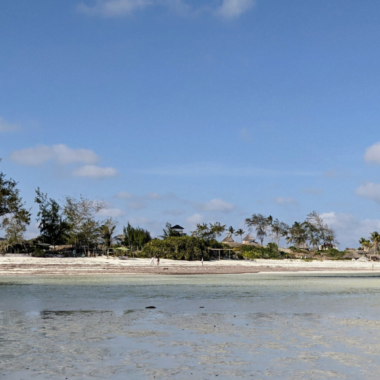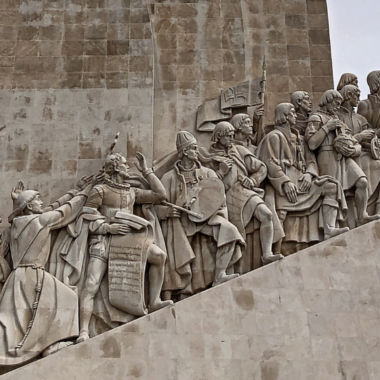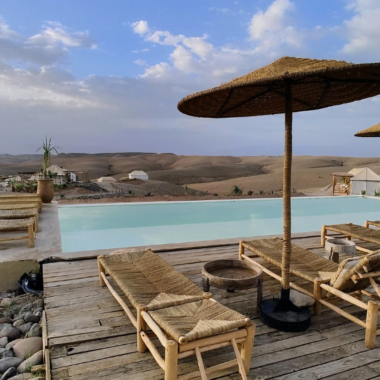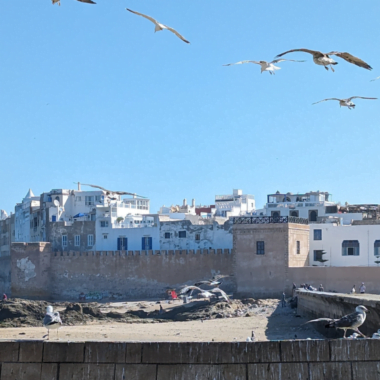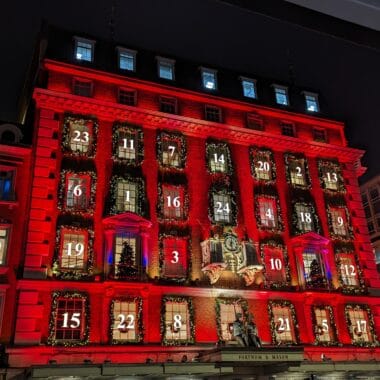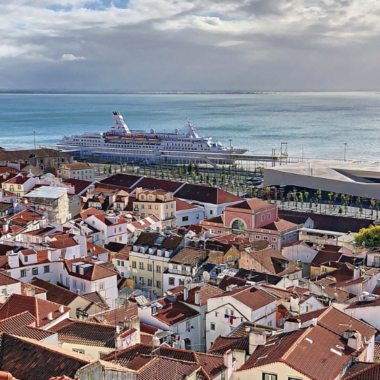Every year, since 2016, Lisbon hosts the Web Summit. It’s an ideal opportunity to combine business and pleasure and discover the wonders of this city … Let’s look back on 4 days of exploration under a sunny November sky. ☀️
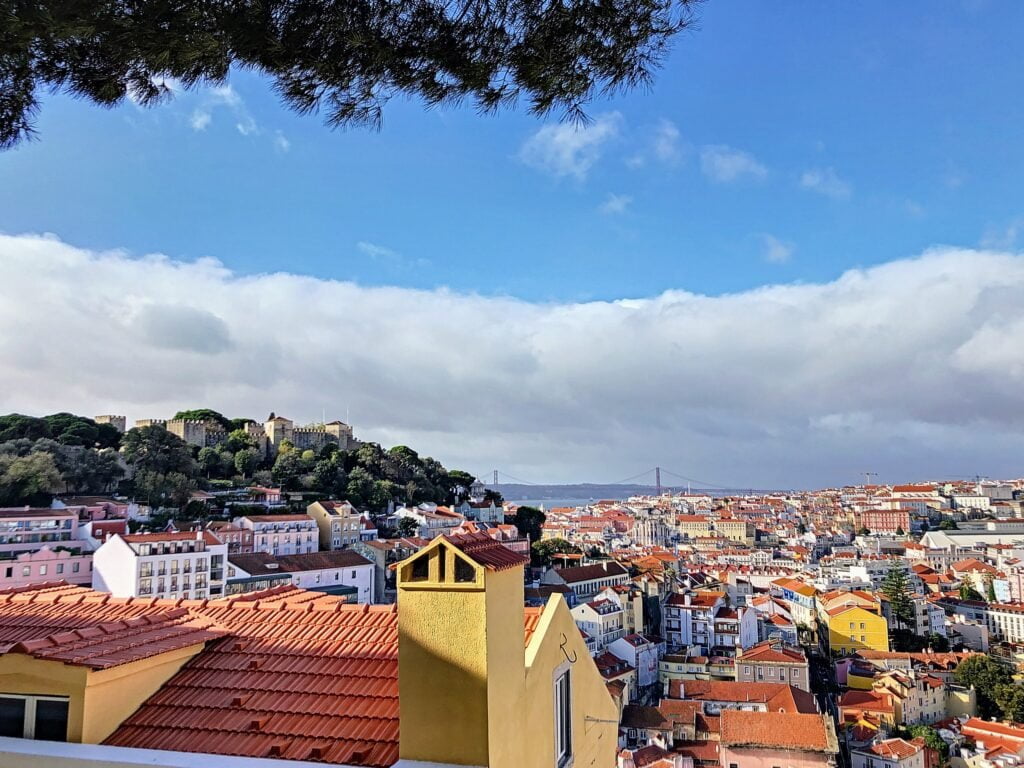
Lisbon in a few words
Lisbon, known as Lisboa in Portuguese, is the capital and largest city of Portugal. In 2021, the Lisbon metropolitan area had a population of 2.2 million. It is the wealthiest city in Portugal, with a per capita GDP surpassing the European Union average.
The city of Lisbon is divided into 24 districts (freguesias) and is located on the right bank of the Tagus Estuary. Two bridges connect the city to the south bank: the 25th of April Bridge and the Vasco da Gama Bridge. The historic center consists of seven hills (São Jorge, Estrela, Santa Catarina, São Pedro de Alcântara, Graça, Senhora do Monte, and Penha de França) which make it difficult or impossible for automobile traffic. As a result, the city is also equipped with an elevator and three funiculars.
A bit of history
First occupied by the Romans, Lisbon was captured by the Moors around 719. The Moors built the city walls – Cerca Moura – and several mosques. The city then housed a diverse population of Christians, Berbers, Arabs, and Jews.
The restoration of Christianity in 1147 by Alfonso I is one of the most significant events in Lisbon’s history. The Muslim population was expelled, and mosques were converted into churches. Only the Mouraria district maintained a Muslim population until the 16th century.
In 1255, Lisbon became the capital of Portugal, replacing Coimbra. From the 15th to the 17th century, most Portuguese maritime expeditions departed from Lisbon. Consequently, the city emerged as a hub for European trade with the Far East.
In 1580, Portugal became part of the Spanish Crown under Philip II. However, Portugal eventually regained its independence in 1640, marking the end of the Iberian Union.
On November 1, 1755, Lisbon was almost completely destroyed by an earthquake, which was then followed by fires and a tsunami, resulting in the death of nearly 100,000 people. The city was reconstructed according to the plans of the Marquis of Pombal, with facades covered in azulejos – decorated ceramic tiles – to protect the buildings from fires.
After three invasion attempts by the Napoleonic troops from 1807 to 1810, the Portuguese royal family flees to settle in Rio de Janeiro, which becomes the only European capital located outside the continent.
In 1910, Lisbon rose up against the monarchy: people built barricades in the streets and distributed weapons. The first Portuguese Republic was proclaimed on October 5, 1910.
In 1926, a military regime replaces the parliamentary system, marking the beginning of the Second Portuguese Republic, also known as the “National Dictatorship”. In 1928, Salazar is appointed as Minister of Finance and later becomes the Prime Minister on June 25, 1932. In 1933, he establishes a new Constitution and implements the Estado Novo, an authoritarian, conservative, and nationalist regime.
Forced to step down from power in 1968 due to a stroke, Salazar was replaced by Marcelo Caetano, who remained in office until 1974 when he was overthrown in the Carnation Revolution. The current Portuguese constitution was adopted on April 2, 1976.
Lisbon – Practical Information
How to get to Lisbon?
Lisbon’s sole airport serves many direct flights from major European cities. The cheapest Lisbon – Brussels flights usually range from €95 to €280 for a round trip.
Located just 6 kilometers from the city, Lisbon Airport offers multiple transportation options to reach downtown Lisbon, including metro, AeroBus, bus, or taxi.
- The red line of the metro (Aeroporto – Saldanha line) takes you to the historic center in just 20 minutes. The cost is €1.65 for a single ticket.
- Several bus lines connect various parts of the city from the terminal. The cost is the same as the metro, €1.65 for a single ticket. Note that the maximum size of luggage allowed on these buses is 50x40x20cm.
- Based on the traffic, a taxi ride to the city center is fast and costs between 10 and 15€.
➜ Low-cost flight arrivals (Ryanair, Easyjet, Transavia, Vueling) typically happen at Terminal 2, which is located 1 kilometer away from the main airport. A free shuttle service connects the two terminals.
How to get around in Lisbon?
Lisbon is well-connected by an extensive public transportation network, offering affordable journeys by subway, tram, bus, and funicular. Here are the main transportation companies based on the type of transport used:
- Metro de Lisboa for subway rides
- Carris for bus, tram, funicular, and Elevador de Santa Justa trips
- CP for suburban train journeys
- Transtejo Soflusa for boat and ferry trips to the other side of the Tagus River.
Depending on how often you use public transportation, you can either purchase single-use tickets or 24-hour passes.
- Carris/Metro ticket: €1.65 – unlimited travel on Carris and Metro networks for 60 minutes after validation
- Carris/Metro 24h ticket for €6.60 – unlimited travel on Carris and Metro networks for 24 hours after validation
- Ticket Carris/Metro/Transtejo for only €9.70 – unlimited travel on Carris, Metro, and Transtejo networks for 24 hours after validation
- Ticket Carris/Metro/CP at €10.70 – valid for unlimited journeys on Carris, Metro, and CP networks (Sintra, Cascais, Azambuja, and Sado) for 24 hours after validation.
➜ When you enjoy walking, using public transportation is not really necessary. Taking the metro or bus to the furthest point and walking the rest of the way allows you to see a lot while experiencing the vibe of this wonderful city.
While many stairs allow for exploring the narrow streets of the city center, a ride on an old tramway is undoubtedly one of the most popular attractions for tourists. The fare for a one-way trip is €3, with very basic comfort and limited seating available! It’s best to avoid it… Unless you hop on tramway 28, which goes through the main points of interest in the historic center.
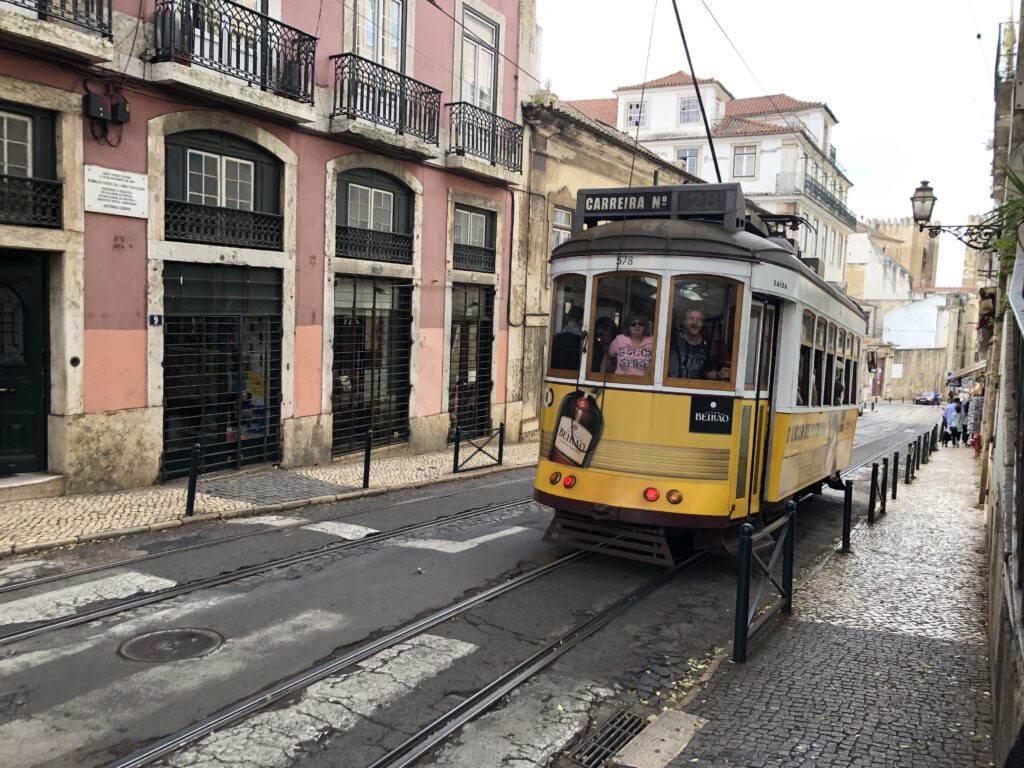
➜ For those planning to visit multiple museums, the Lisboa Card offers access to 39 museums, landmarks, and points of interest, while allowing you to use various modes of transportation such as the metro, tram, bus, elevator, funicular, and suburban train. The base price for the card is €22 per adult for a day.
When is the best time to visit Lisbon?
With a Mediterranean climate strongly influenced by the Atlantic Ocean, Lisbon enjoys pleasant temperate weather throughout the year, with few extremely hot or freezing days. Average temperatures range from 15°C in January to 29°C in July.
During winter, the climate in Lisbon is relatively mild and sunny, although rainfall is possible from November to February. With sunny weather, pleasant warmth, and almost no rain, the best time to visit Lisbon is from May to October.
The summer season, however, sees a surge in tourist traffic, which drives up the prices of flights and hotels. In spring and autumn, prices are more affordable with moderate tourist crowds, and temperatures range around 20°C in April and between 20 and 25°C in October.
Where to stay in Lisbon?
Lisbon has numerous picturesque neighbourhoods, each offering unique atmospheres and experiences. While it’s recommended to stay nearer the historic center to minimize commuting time, here’s a quick overview of the best neighborhoods to stay in Lisbon based on your preferences…
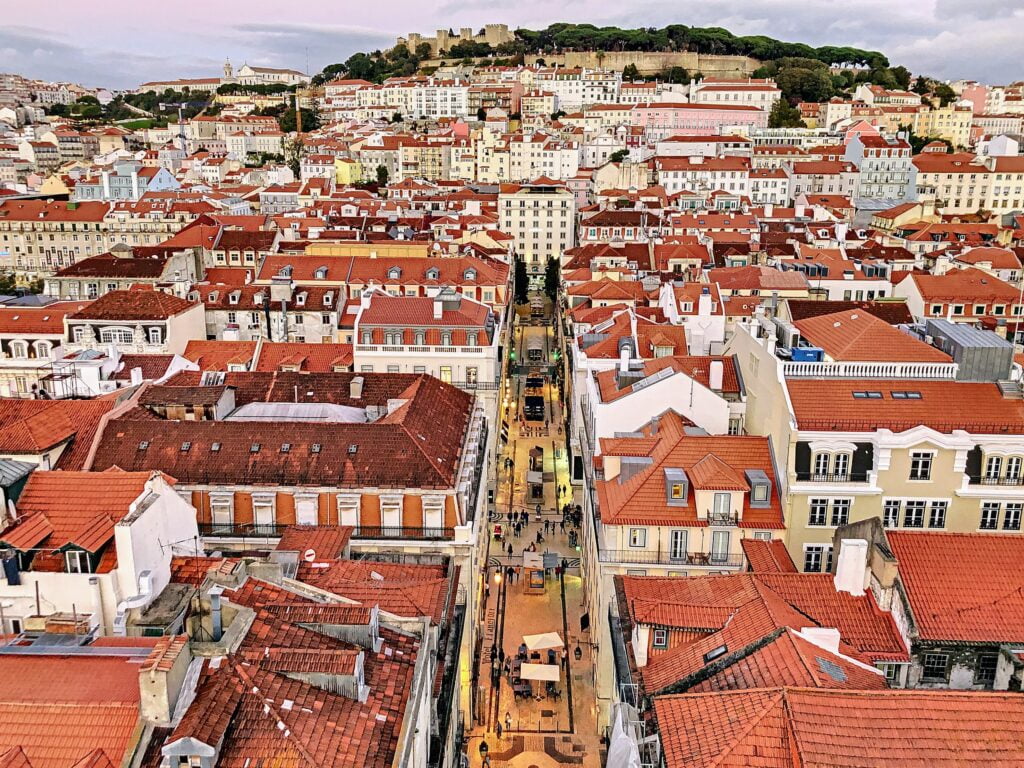
- Baixa, the historical heart of Lisbon, was completely rebuilt after the 1755 earthquake. It is brimming with neoclassical buildings, trendy shops, bars, and restaurants spread across wide perpendicular avenues. As the most visited district in Lisbon, accommodations here are generally slightly more expensive than elsewhere. However, you can still choose between boutique hotels and hostels.
- Less affected by the earthquake, Alfama houses most of the city’s historical sites, including the famous São Jorge Castle. As the oldest neighbourhood in Lisbon, it was once home to the poorest inhabitants during the Middle Ages. Today, it remains a genuine labyrinth of narrow winding alleys lined with authentic houses.
- Continuing from Alfama, Graça is a former working-class neighbourhood perched on a hill. The breathtaking panoramas come at a price: you have to enjoy climbing or manage to secure a spot on the famous tram 28!
- Bairro Alto is a lively and noisy neighbourhood, home to a bohemian and youthful population. It features attractions like the Bica funicular, the botanical garden, and lovely viewpoints such as Miradouro São Pedro de Alcantara and Miradouro Santa Catarina.
- On the heights of Bairro Alto, the neighbourhood of Príncipe Real has a certain resemblance to the Parisian “Marais” with its upscale restaurants and boutiques. It is also a popular place among the gay community.
- Located not far from Príncipe Real and often compared to the Champs-Élysées of Paris, Avenida da Liberdade is Lisbon’s upscale neighbourhood. It houses elegant accommodations, luxury shops, and trendy restaurants in magnificent 19th-century buildings.
- In close proximity to Baixa and Bairro Alta, Chiado is the cultural hub and bourgeois district of Lisbon. Its many trendy boutiques make it a highly popular destination for shopping enthusiasts.
- Once a place frequented by unsavory characters, Cais do Sodré has transformed into one of Lisbon’s trendiest neighbourhoods. The fishing shacks have been replaced with gin bars, and the mercado da ribeira is no longer a fish market but a renowned Time Out Market. Additionally, Pink Street is home to several lively spots that nightlife enthusiasts will thoroughly enjoy.
- Located slightly away from the city center, but with excellent public transportation connections, Belém is a peaceful neighbourhood with plenty of green spaces and several museums and historic buildings. Belém is also renowned for its famous pastéis de nata.
- Mouraria, Intendente, and São Vicente are among Lisbon’s trendiest neighbourhoods, still relatively undiscovered. They offer a local and authentic atmosphere. You’ll find the stunning São Vicente de Fora convent alongside numerous street art works, trendy bars, nightclubs, and traditional restaurants. Additionally, the Feira da Ladra flea market is a great place for a local shopping experience.
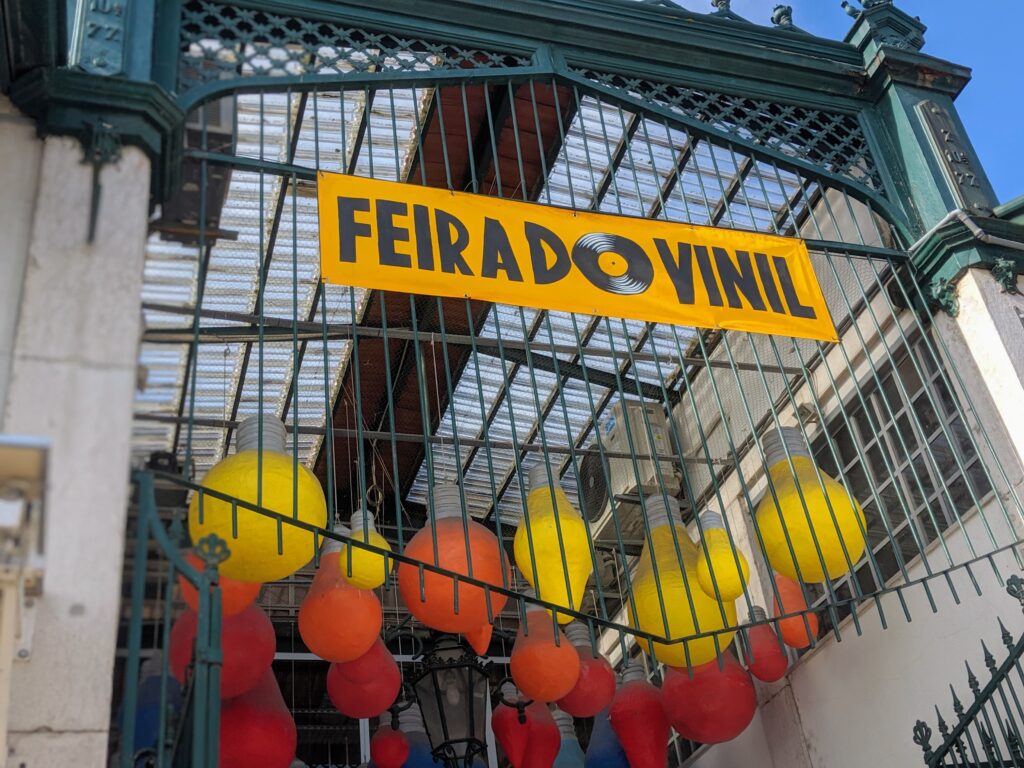
➜ The apartment we rented is located in the heart of Mouraria, just below São Jorge Castle. It’s bright and pleasant, with two bedrooms, a shower room, and a small equipped kitchen. We chose it for its very central location, making it an excellent starting point for exploring the surrounding area on foot. Perfect for the planned 4-day visit…
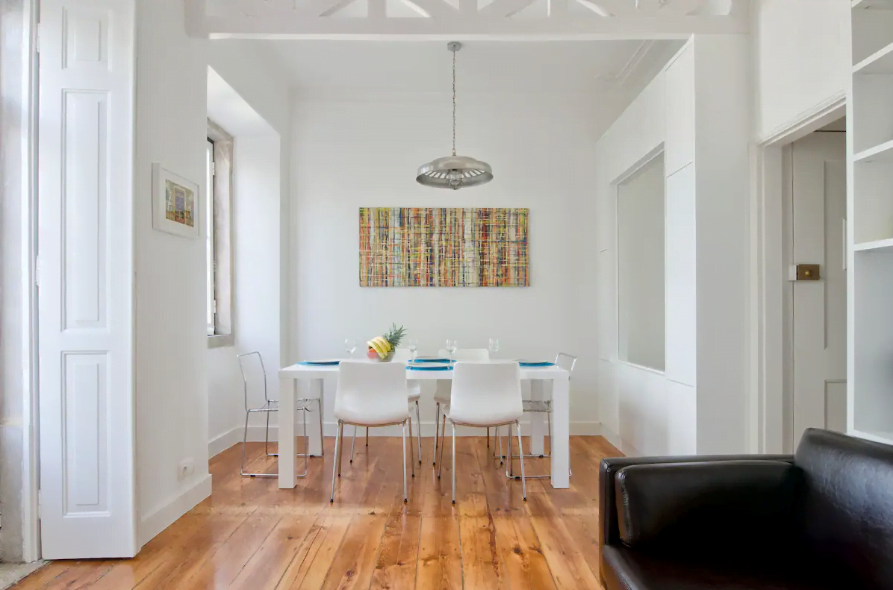
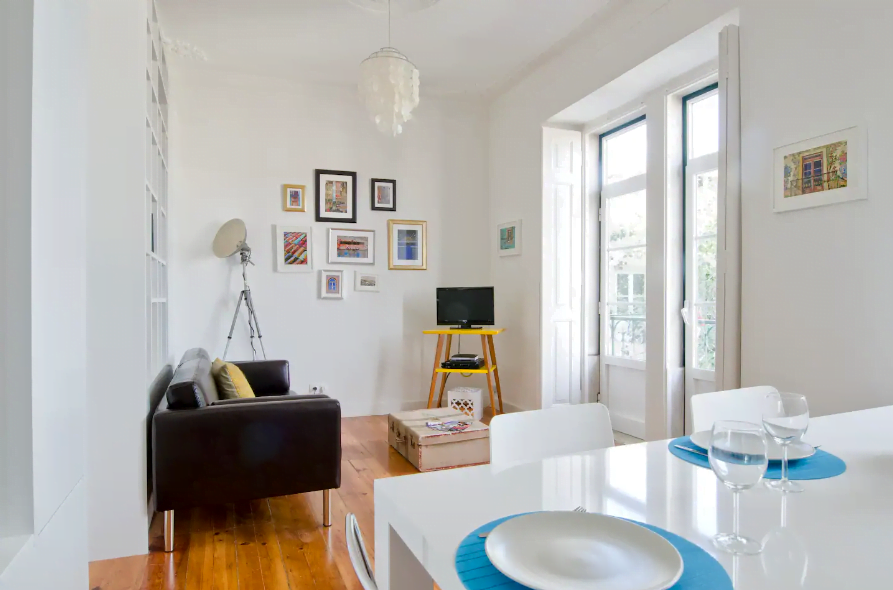

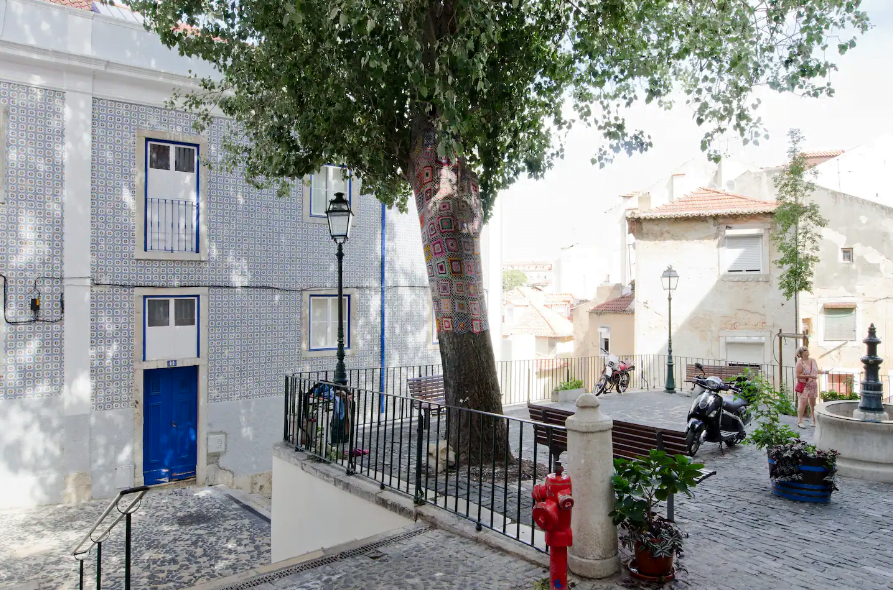
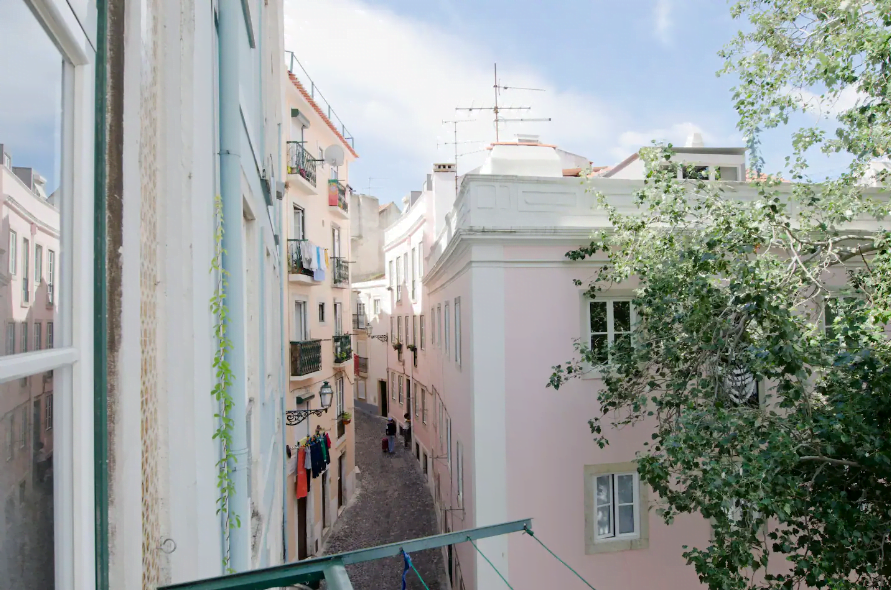
Itinerary – What to see in Lisbon in 4 days?
First evening, first rooftop with a view of the castle. On the way, we pass by the Santa Justa elevator. It’s absolutely beautiful! We’ll come back during the day to admire it even better.
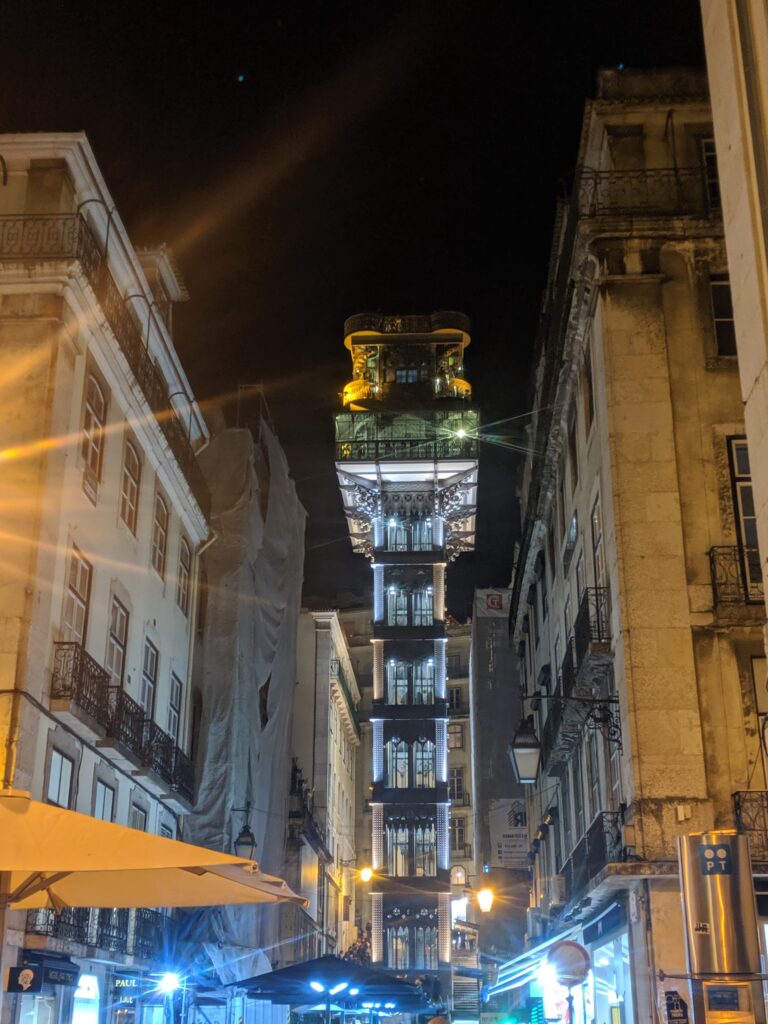
Deciding to grab a bite before calling it a night, we randomly chose VdB Bistronomie. What a discovery! The place is cozy and already bustling when we arrived. We were offered seats at the bar, right in front of the action in the kitchen. Clément Van Den Bergh and his small team offer a high-quality culinary experience that respects the ingredients used. Here, we enjoy organic, local, and seasonal food… And everything is delicious!
Day 1 – Alfama
On the agenda for the first day, explore the Alfama, Mouraria, and Graça neighbourhoods on foot.
The Alfama neighborhood is one of the most picturesque areas in Lisbon, known for its winding streets, city views, and authentic atmosphere. Must-see attractions in this district include Castelo de São Jorge, Lisbon Cathedral, Fado Museum, Flea Market of Ladra, and Santo António de Lisboa Church.
We take advantage of the good weather to explore the narrow streets of the neighbourhood, discovering colorful buildings and several miradouros that offer magnificent views of Lisbon.
First stop at Miradouro de Santa Luzia, a viewpoint that boasts stunning views of the Tagus River, the red roofs of Alfama, and the two white towers of São Miguel church.
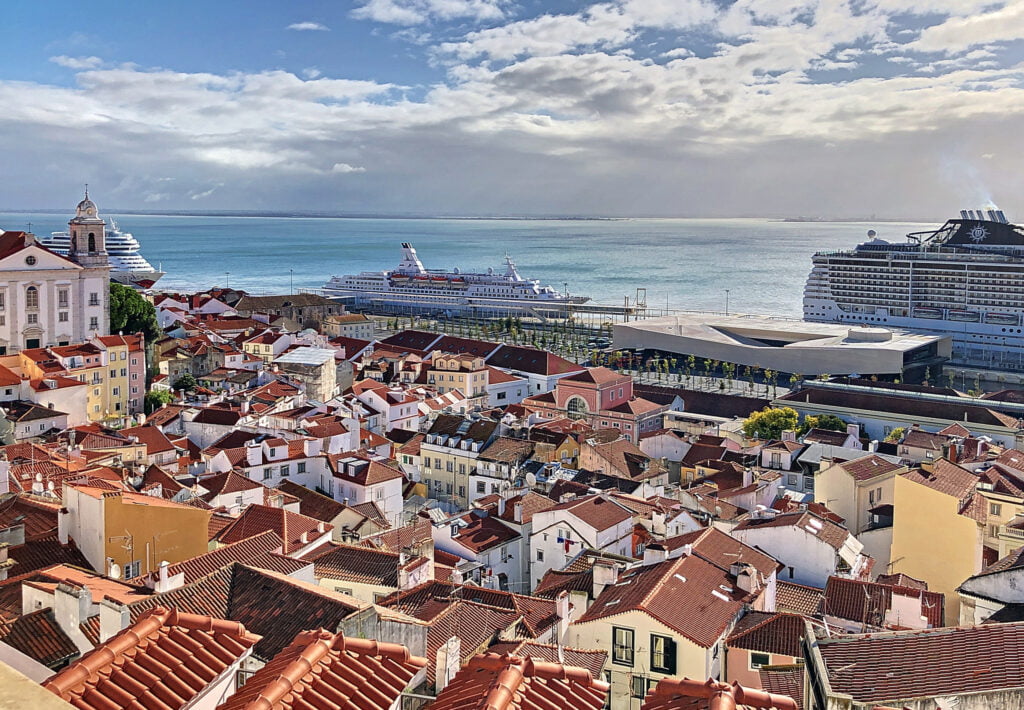
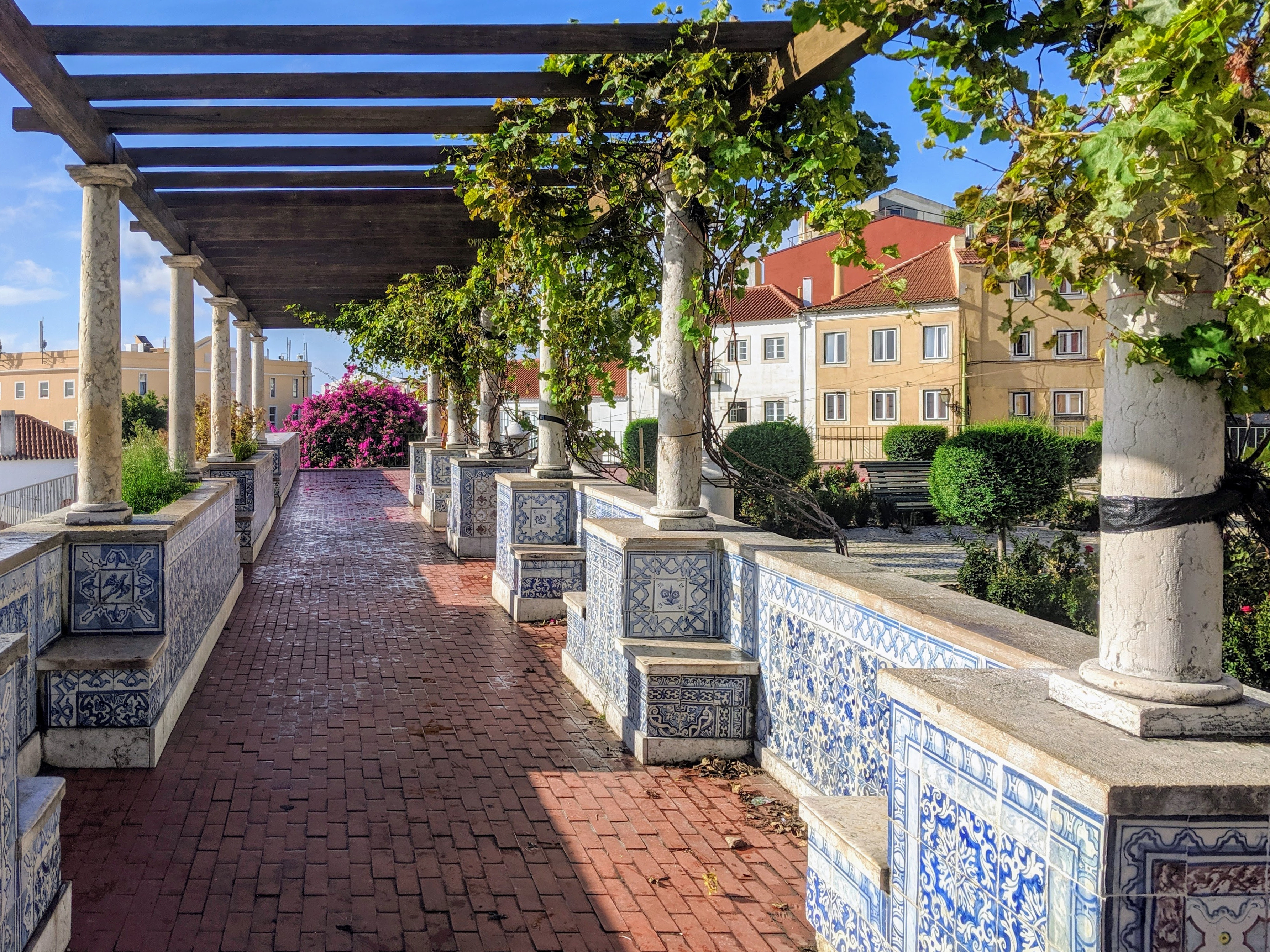
A little further, the Monastery of São Vicente de Fora is impressive with its Renaissance-style facade and cloisters adorned with azulejos.
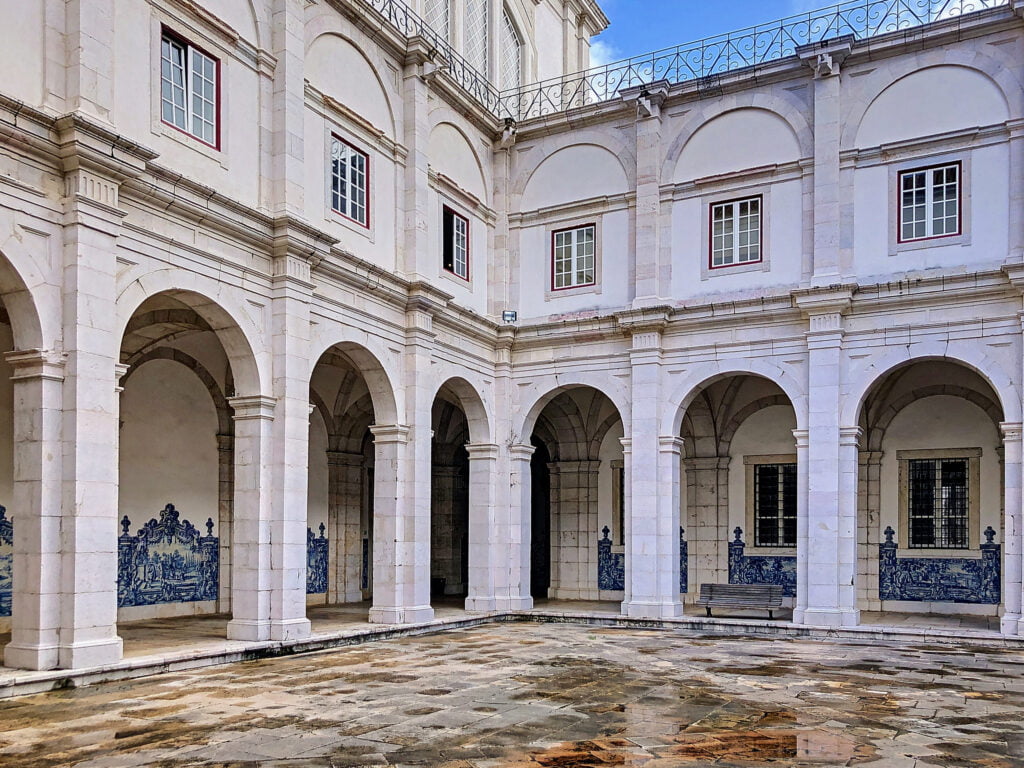
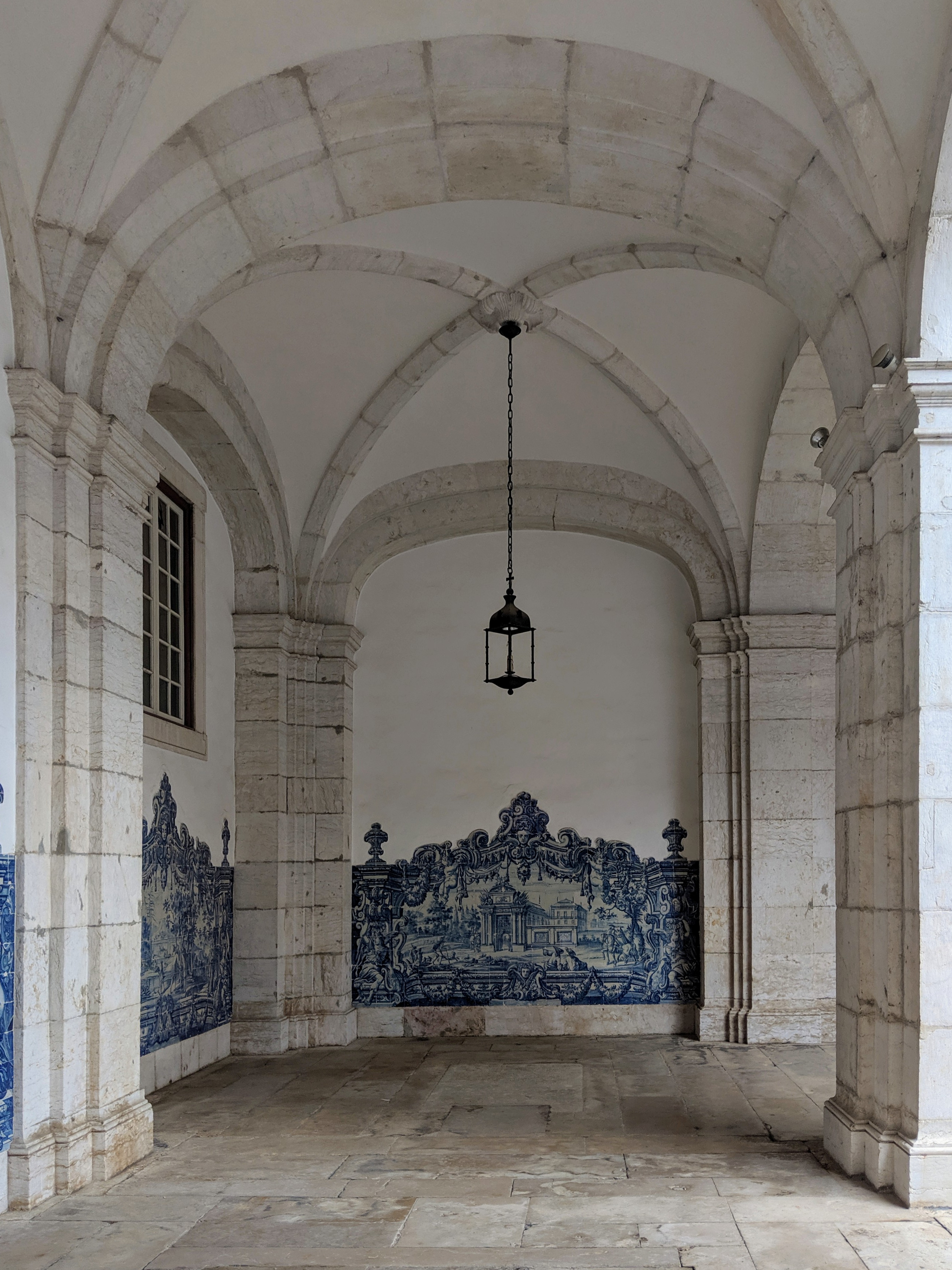
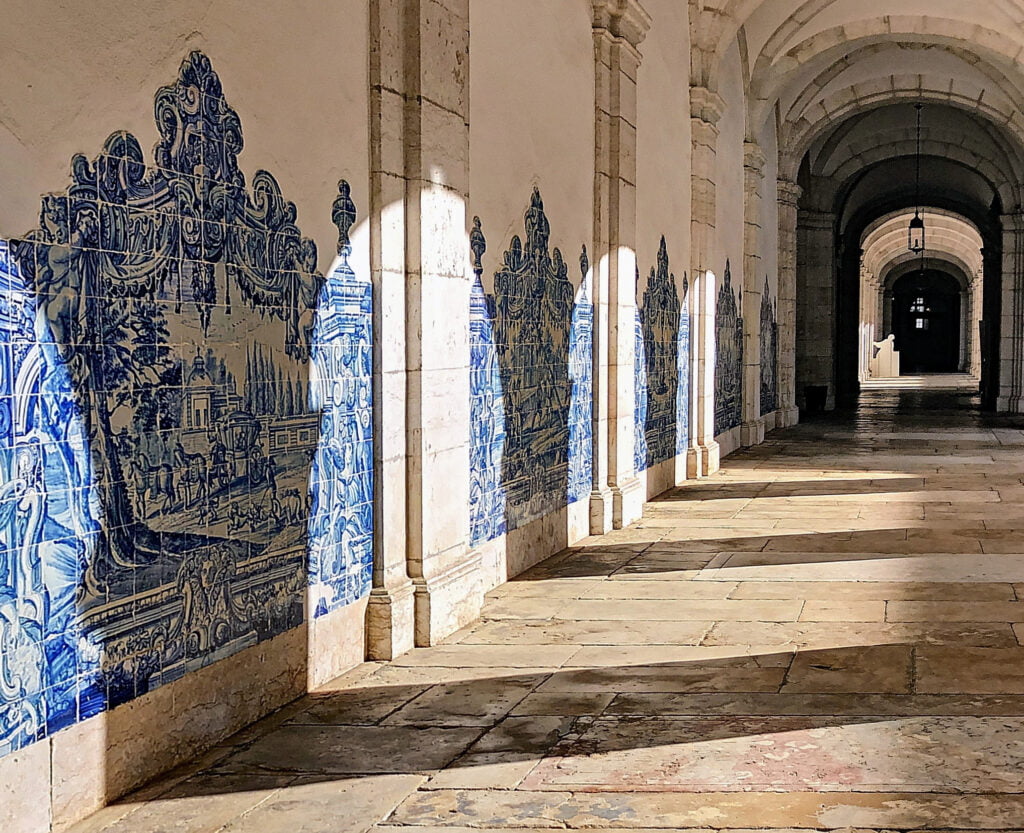
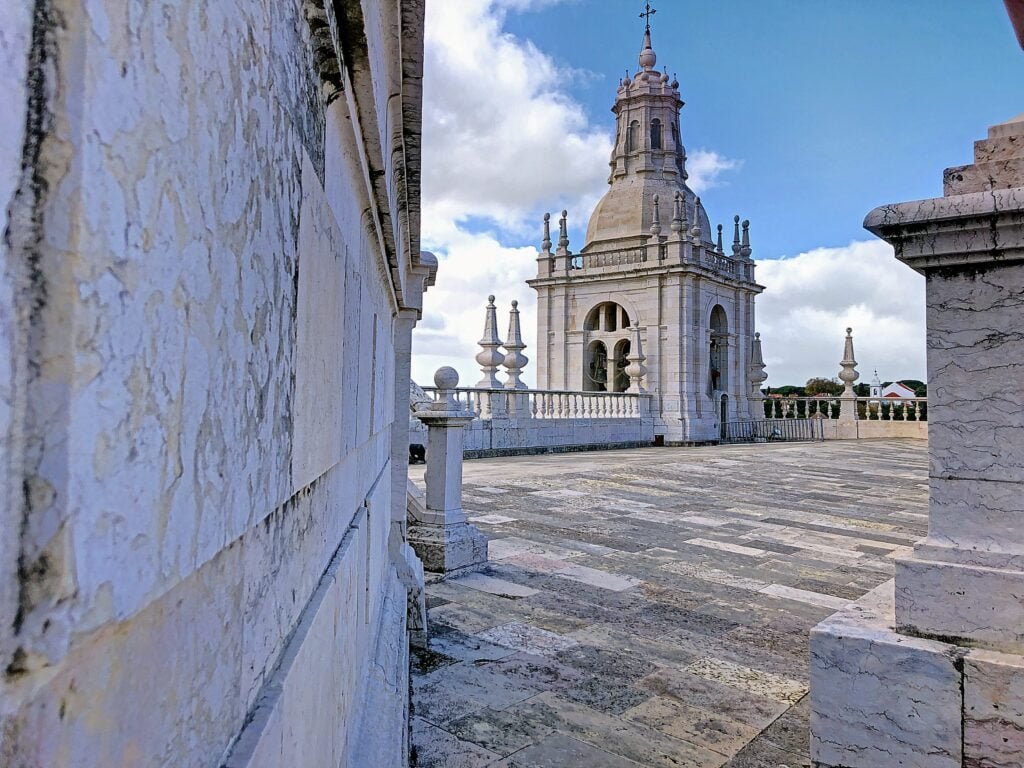
Inside, you’ll find over 220 panels comprising of more than 100,000 azulejos, making it the largest collection of baroque azulejos worldwide. Additionally, 38 panels even depict fables by La Fontaine! Moreover, the rooftop terrace provides one of the most stunning views of the city 🤩
Passing through the Santa Clara market before reaching the parish church of Graça at the top of Graça hill, near the viewpoint of the same name. A few hundred meters below, the São Jorge Castle, the last stop of this first day of visit.
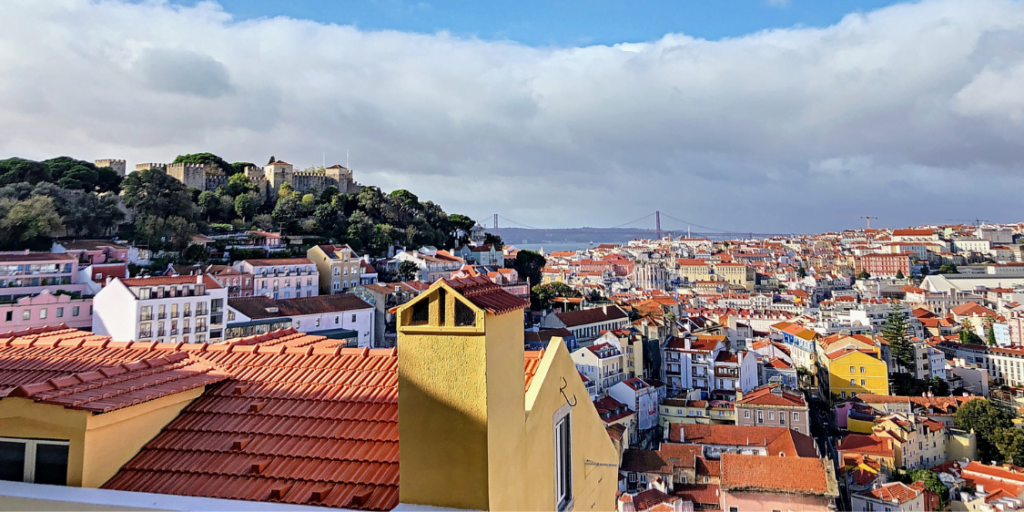
➜ Our complete itinerary is detailed in the article: “Lisbon: Explore Alfama, Mouraria, and Graça with this itinerary“
Day2 – Park of Nations and Bairro Alto
We begin our second day with a visit to the Web Summit, held at FIL (Feira Internacional de Lisboa) in one of the city’s new districts, Parque das Nações (Park of Nations).
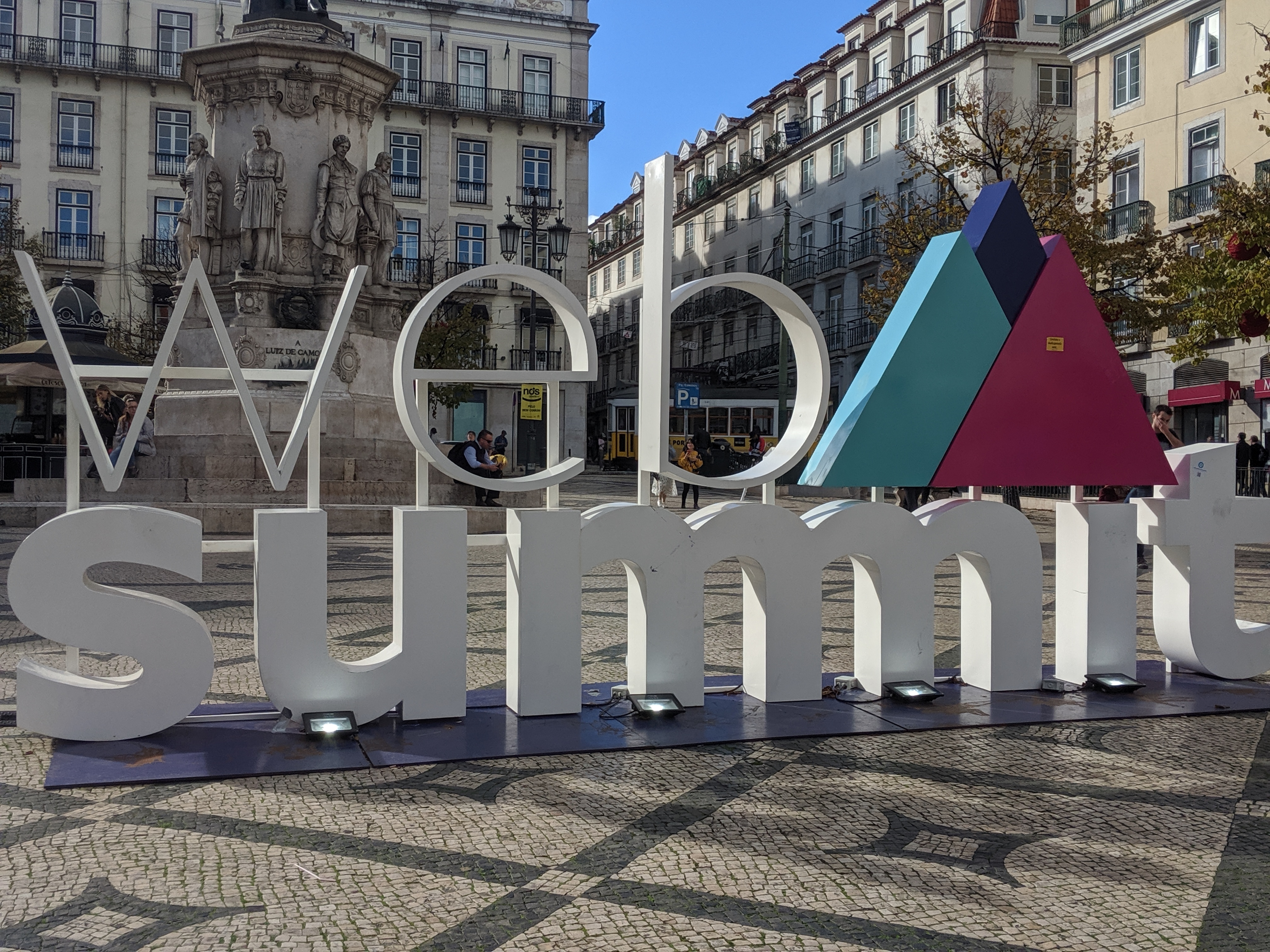
With over 70,000 participants and 1,200 speakers across 20 different stages, navigating the numerous aisles of Web Summit can be quite challenging 🤯

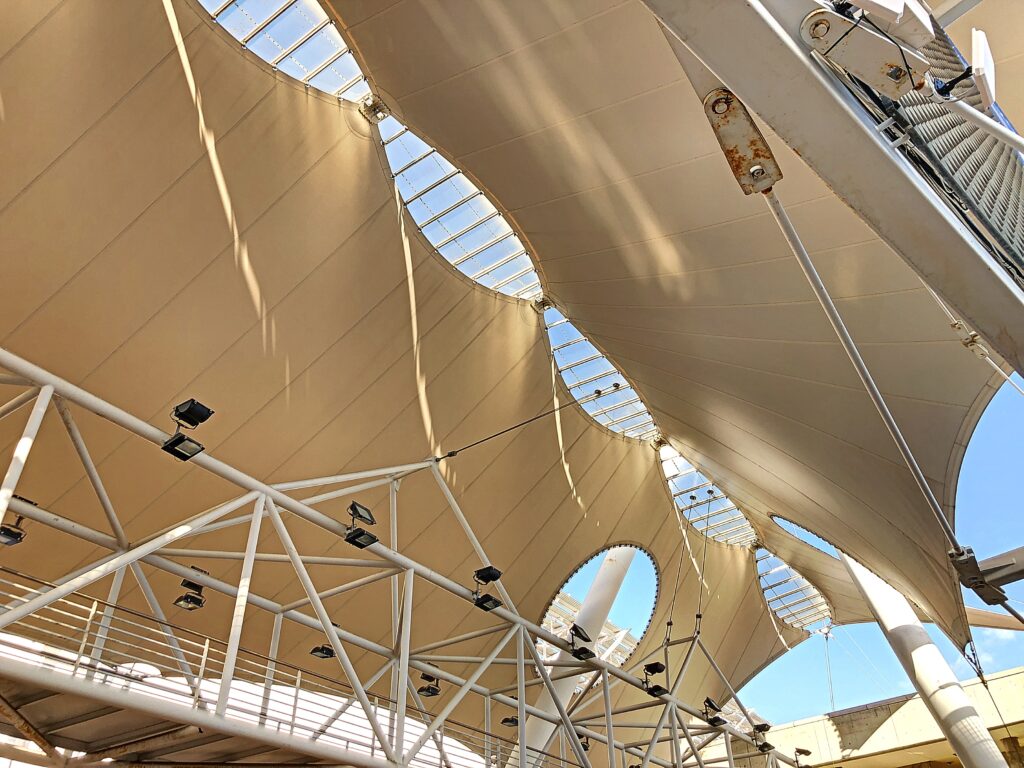

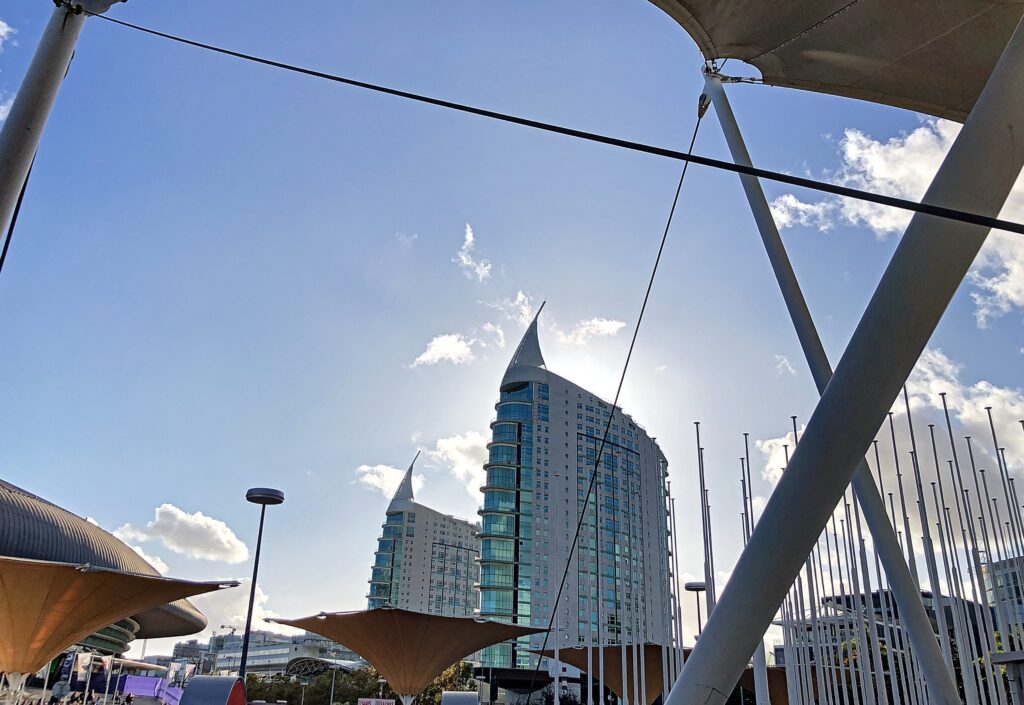
We leave the crowded aisles behind for a peaceful stroll in the Park of Nations. Once abandoned in the 1990s, this former industrial zone found a new lease on life thanks to the 1998 International Exhibition, with its theme “Oceans: A Legacy for the Future”, and an urban rehabilitation project that gave rise to numerous contemporary-style buildings.
Today, the Park of Nations is undoubtedly Lisbon’s most modern and futuristic neighbourhood, in stark contrast to the historical charm of Alfama.
Among notable points of interest not to be missed in this neighbourhood:
- The Pavilion of Portugal, an architectural gem designed by Siza Vieira. It features a roof made of a 20-centimeter-thick layer of concrete, extending for 65 meters without any columns or supporting walls.
- The Gare do Oriente, designed by the Spanish architect Santiago Calatrava, renowned for his organic design.
- The iconic Vasco da Gama Tower – the tallest building in the city – and its cable car offer stunning views of the entire area.
- The Oceanário de Lisboa is one of the world’s largest aquariums and a top tourist attraction in Portugal.
- The Vasco de Gama Bridge is one of the longest in Europe, connecting the north and south of Lisbon by crossing the Tagus Estuary.
We leave the Park of Nations and head towards São Pedro de Alcântara viewpoint. This two-story belvedere provides stunning views of São Jorge Castle, Mouraria district, Avenida da Liberdade, and the lower part of Baixa district. Additionally, you’ll find a garden from 1864, several remarkable statues, and an azulejos orientation table.

Passing through some lively streets of Bairro Alto, followed by taking the stairs of Calçada do Duque towards Praça Dom Pedro IV – formerly known as Rossio – the true heart of Baixa.
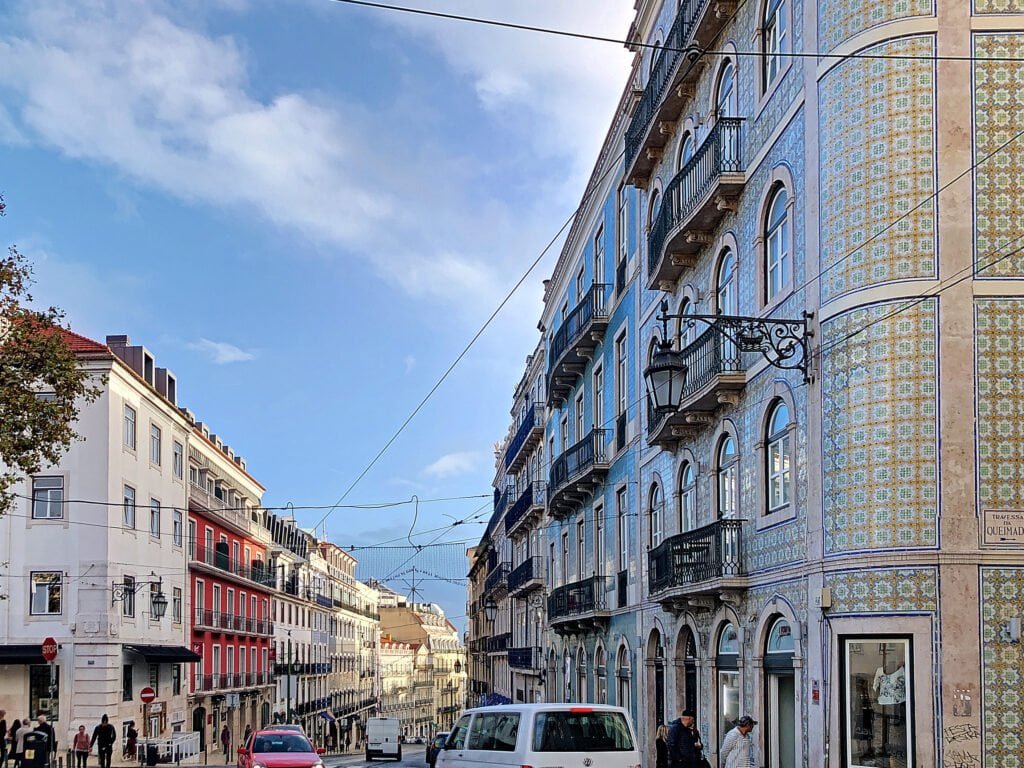

On Praça Dom Pedro IV, you can find two baroque fountains dating back to 1889, an impressive display of undulating paving stones – installed after the 1755 earthquake – and a fascinating sardine shop. 🎪
Although O Mundo Fantástico da Sardinha Portuguesa is not the only store to buy canned goods in Lisbon, it is certainly one of the most colorful facades. The store’s entire decoration is circus-themed, adding to its uniqueness. Additionally, they offer sardine cans representing a particular year between 1916 and 2016, each displaying significant events from that year. These cans are available for purchase at 7€ each.
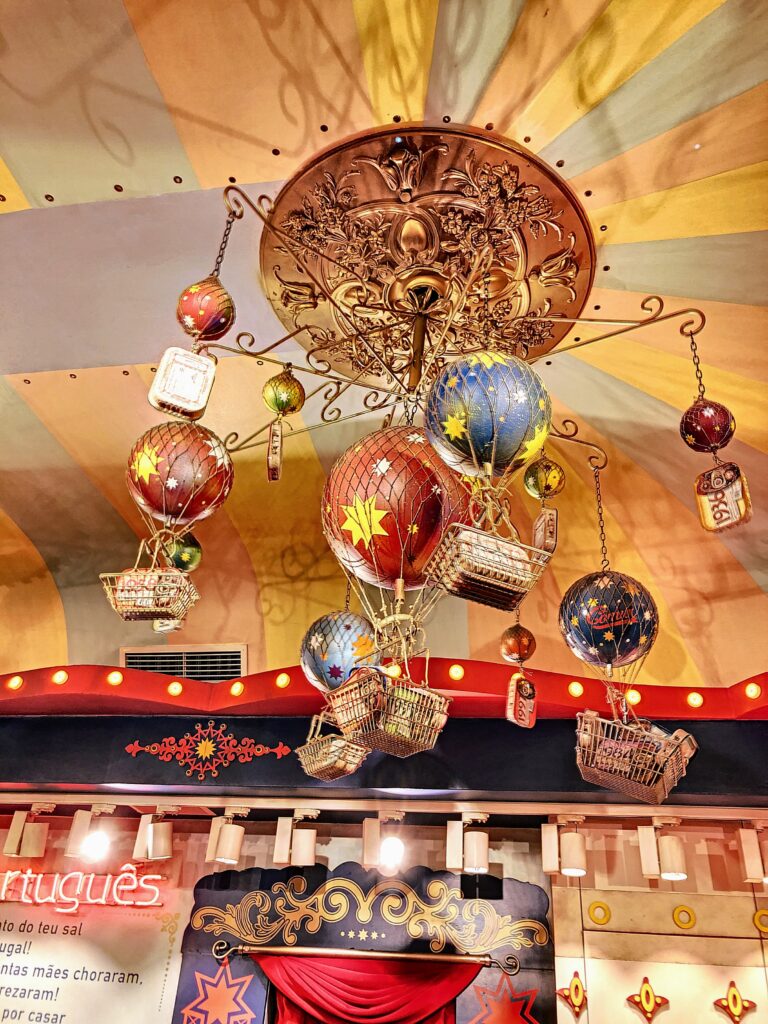
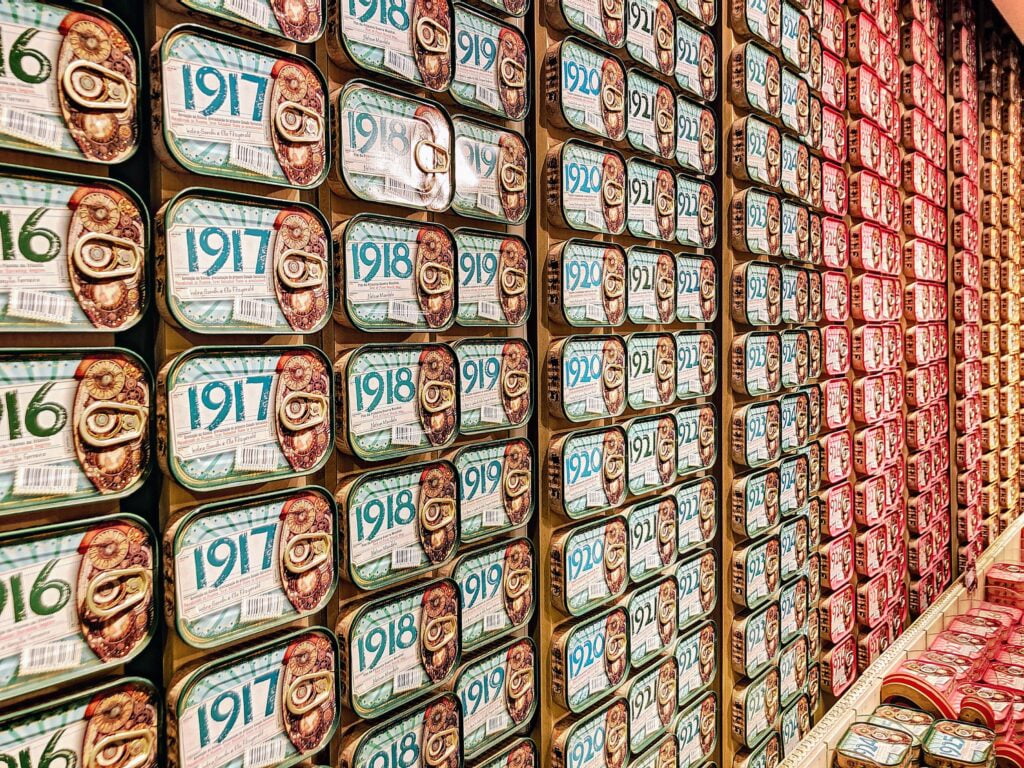
Not being fans of sardines, we stopped for a few minutes to enjoy local cheeses and hams at O Bar da Odete, unfortunately closed since our visit.
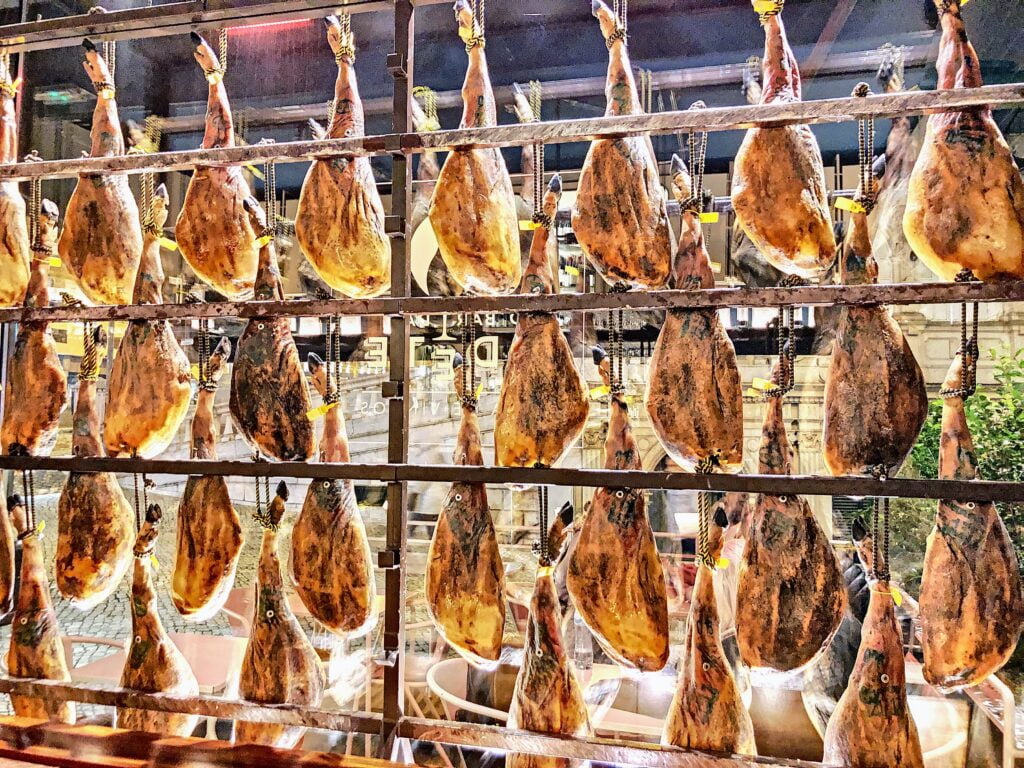
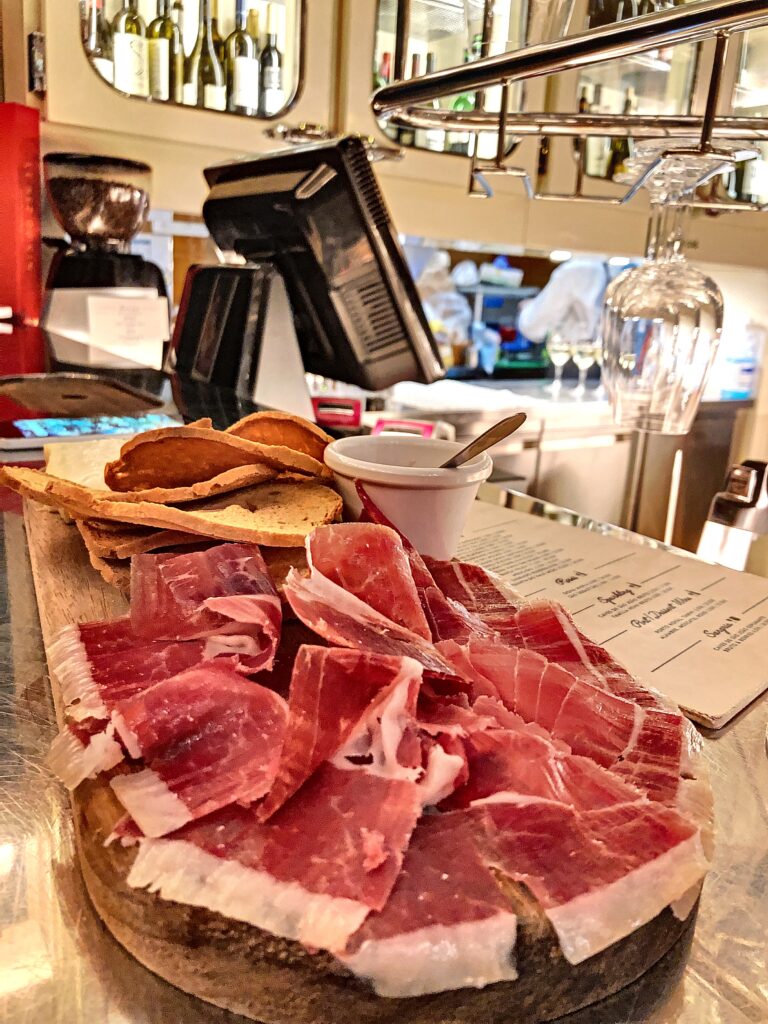
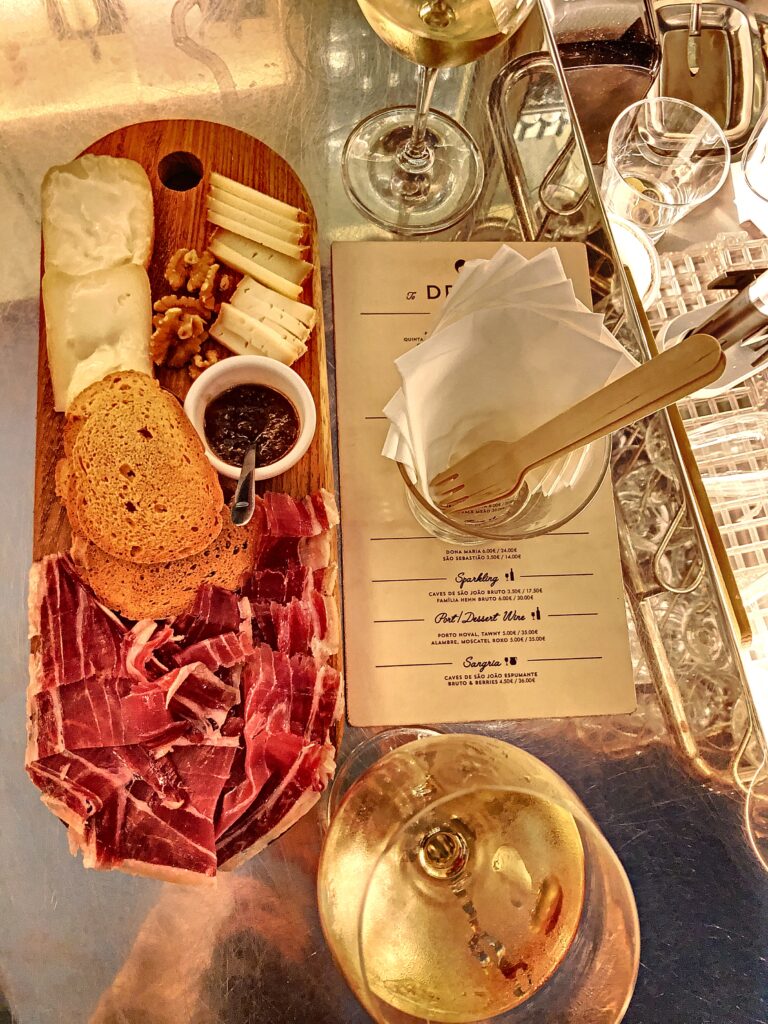
We leave Praça Dom Pedro IV and head back to the Santa Justa elevator.
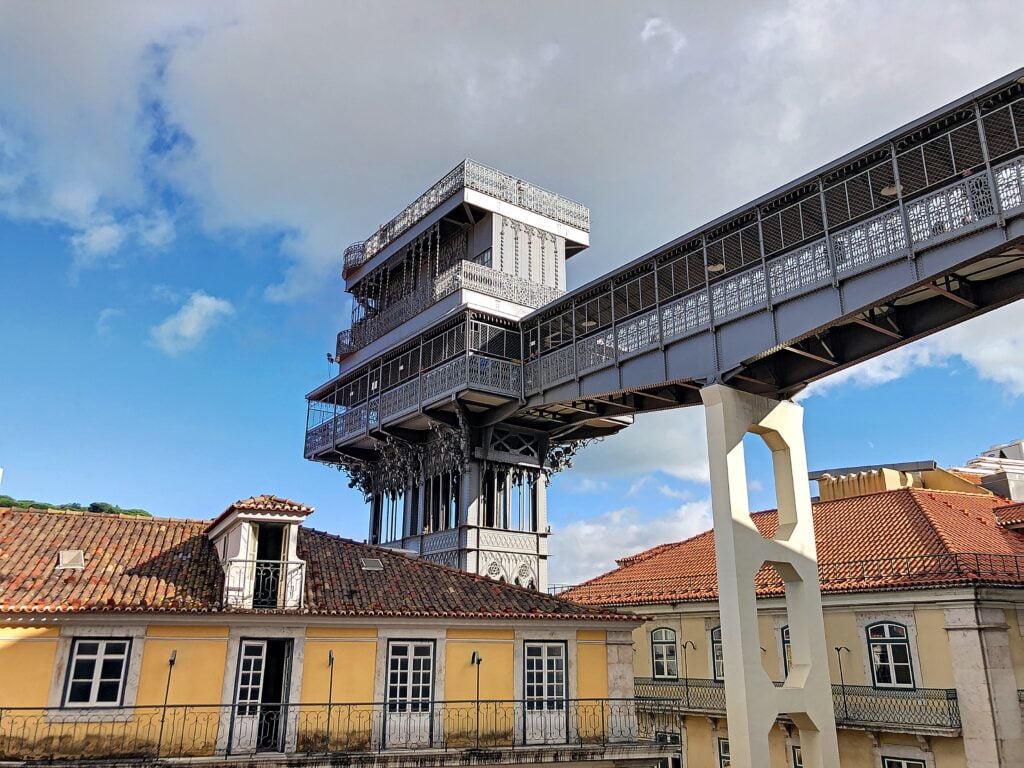
Designed by Raoul Mesnier du Ponsard in the early 1900s, the Santa Justa elevator connects the Baixa district with the Bairro Alto. Standing at 45 meters tall, this structure is made of wrought iron and adorned in a neo-Gothic style. Originally powered by a steam engine and later electrified in 1907, it is the only fully vertical urban elevator in the city, as the others are actually funiculars.
On the upper level, there is a lookout and a café, which can be reached via a spiral staircase. From there, you can enjoy a magnificent view of São Jorge Castle, Rossio, Baixa, and the Tagus River.
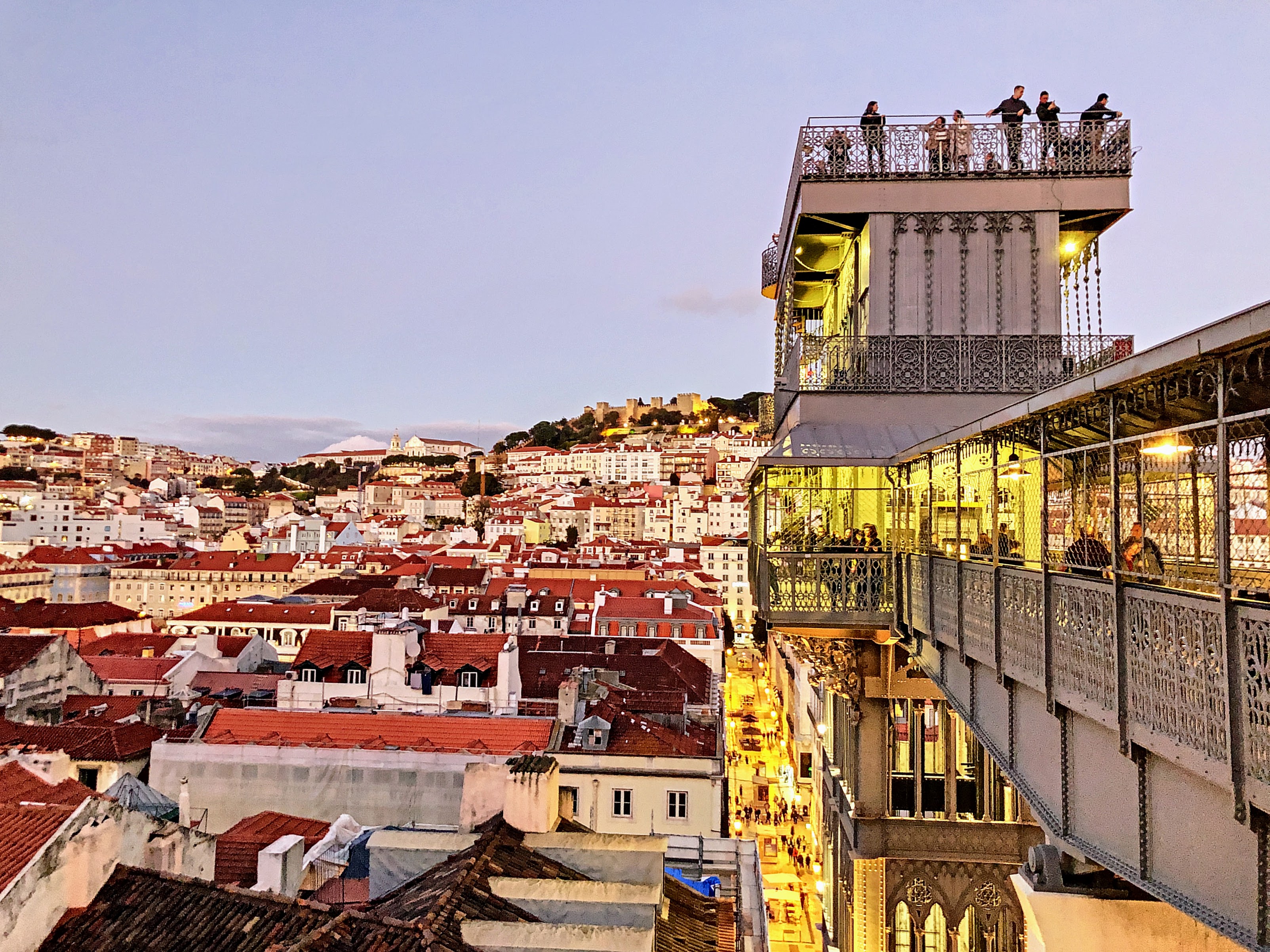
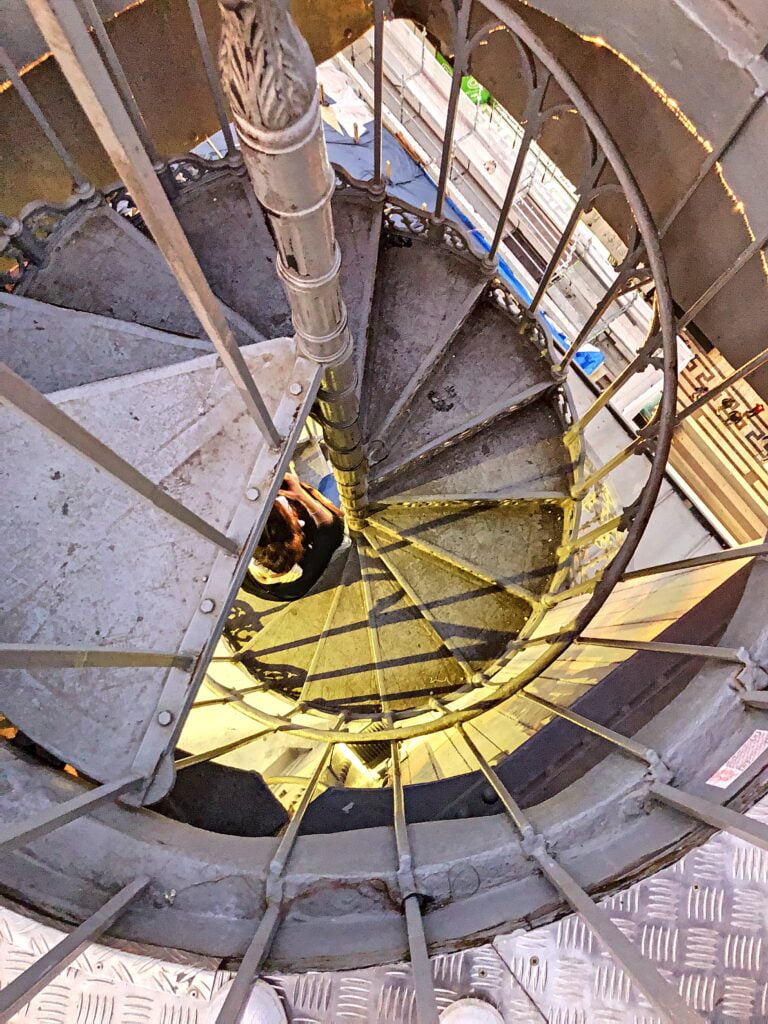
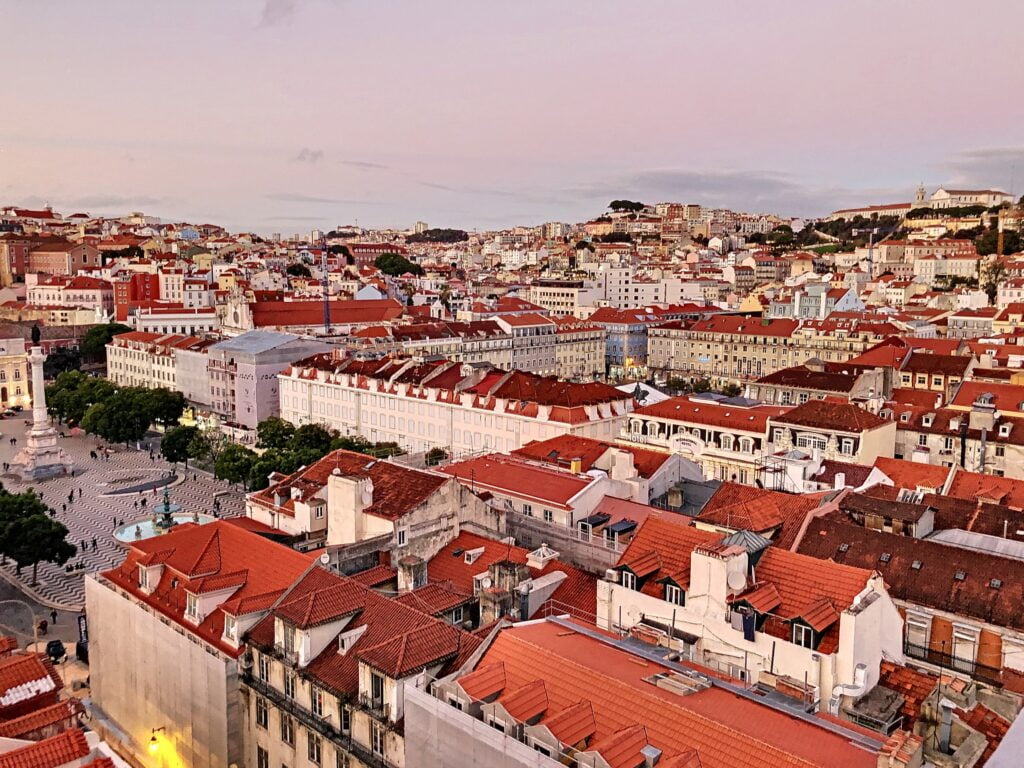
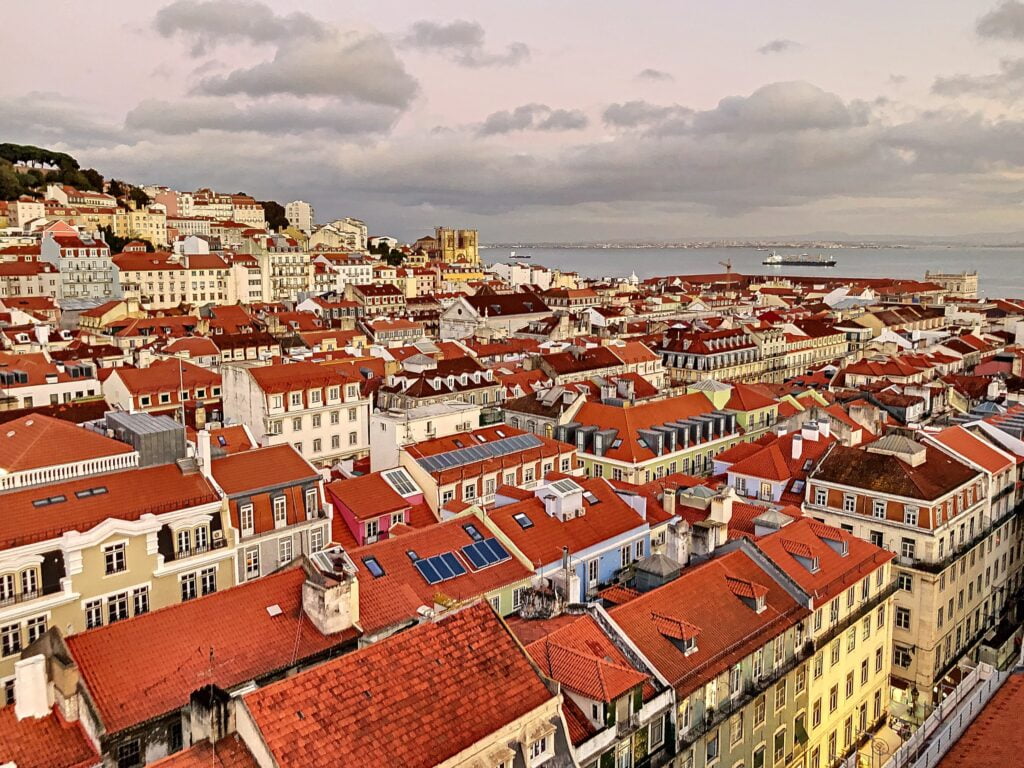
The belvedere also provides a nice view of the ruins of the Convento do Carmo, founded in 1389, which collapsed during the earthquake of 1755 and was never rebuilt. However, the main body of the church and the choir have been restored and now house an archaeological museum.
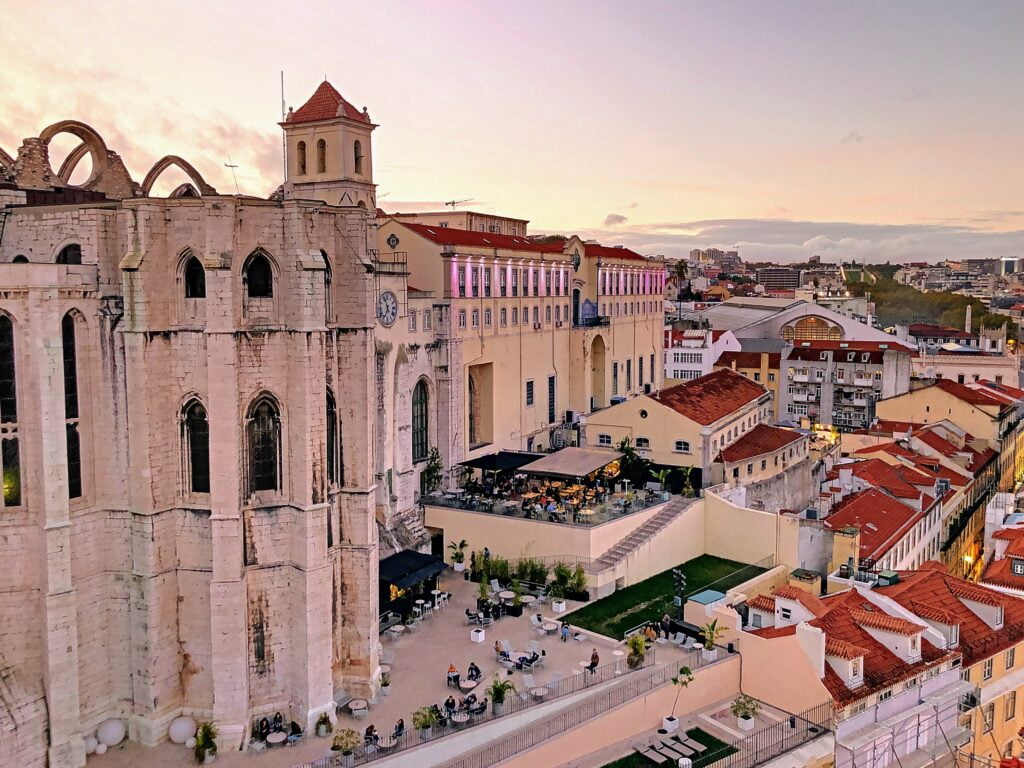
Helpful information
- The Santa Justa elevator is located on Rua do Ouro.
- The elevator is open to visitors every day from 7am to 9pm. As a means of transportation, it operates daily from 7am to 11pm.
- The ticket costs €5.3 and includes access to the ascent and the viewpoint.
Last few minutes of walking to enjoy the sunset from the terrace of the Park. Finding this trendy rooftop, hidden on the top floor of a parking lot, isn’t the easiest – no exterior signs and a very unpleasant smell in the elevator shaft – but the view from the top is absolutely amazing 🤩
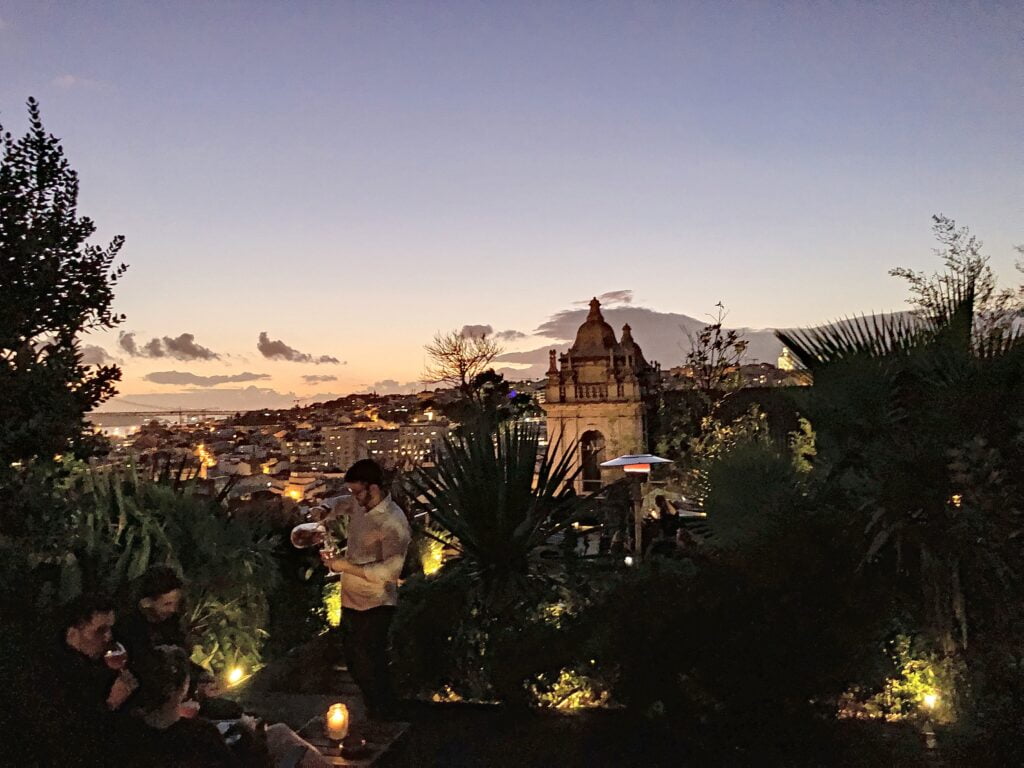
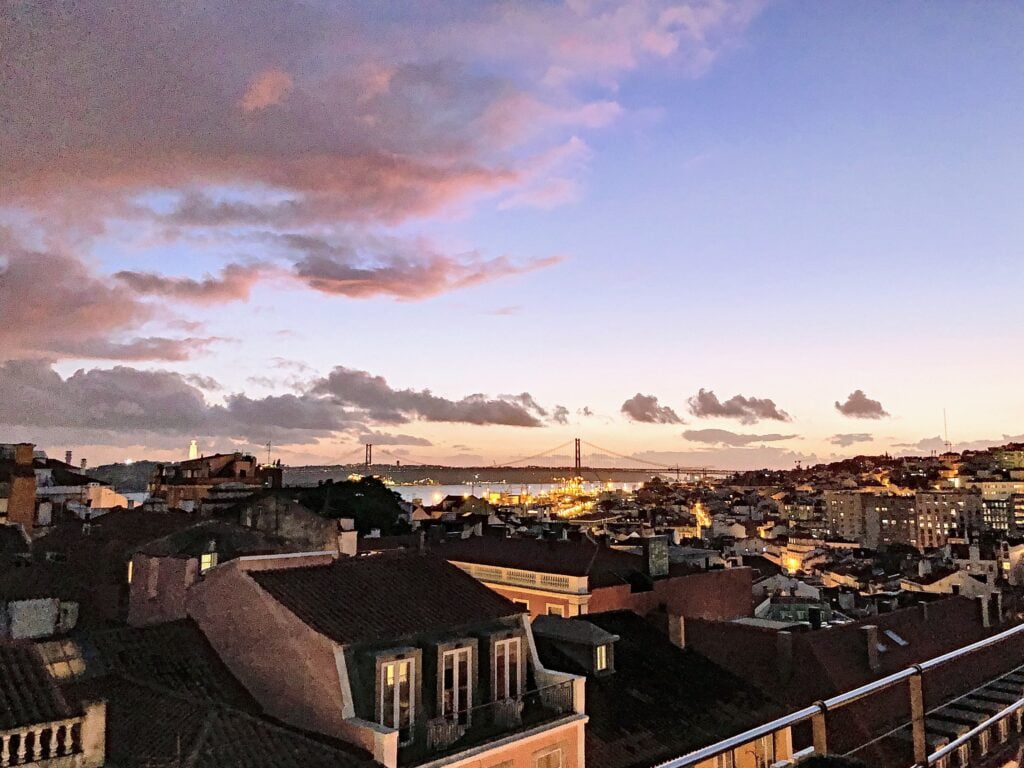
On the way back, we’re tempted by the Bica funicular, but since it doesn’t really align with our route, we head home and hit the sack without delay…
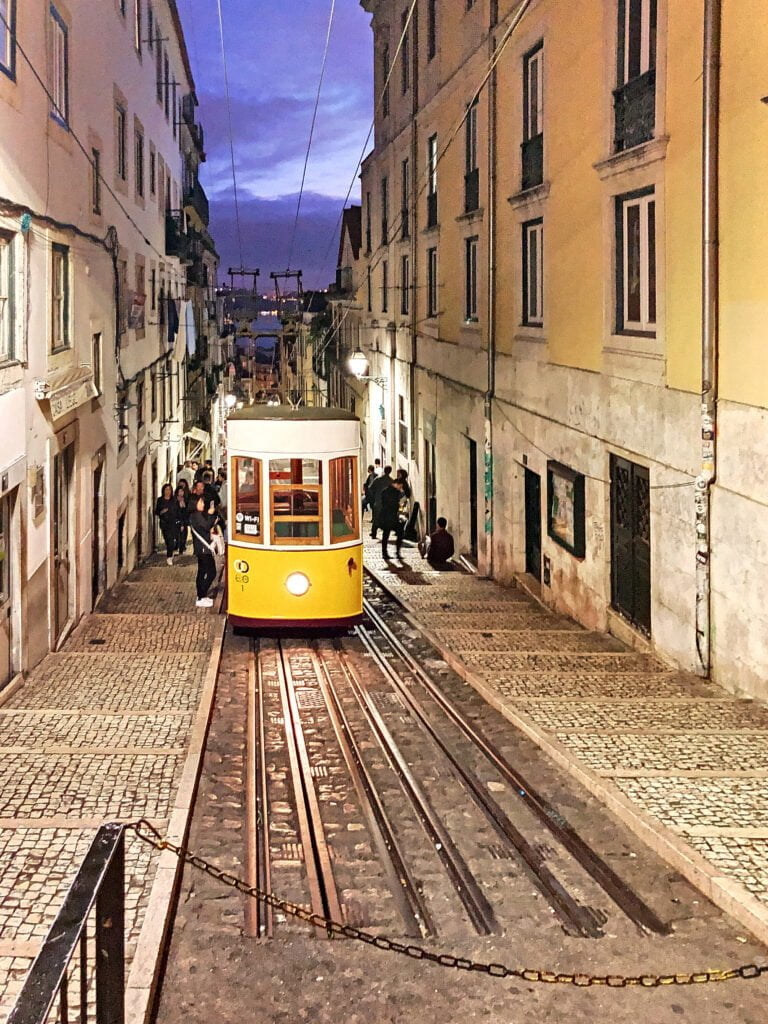
Day 3 – Príncipe Real
After a morning of attending conferences at the Web Summit, we hop on the subway towards Lisbon’s green lung, Eduardo VII Park. Situated on a former basalt quarry, the park spans more than 25 hectares north of Avenida da Liberdade and Marquis of Pombal Square. Among other attractions, the city’s largest greenhouse, Estufa Fria, can be found there.
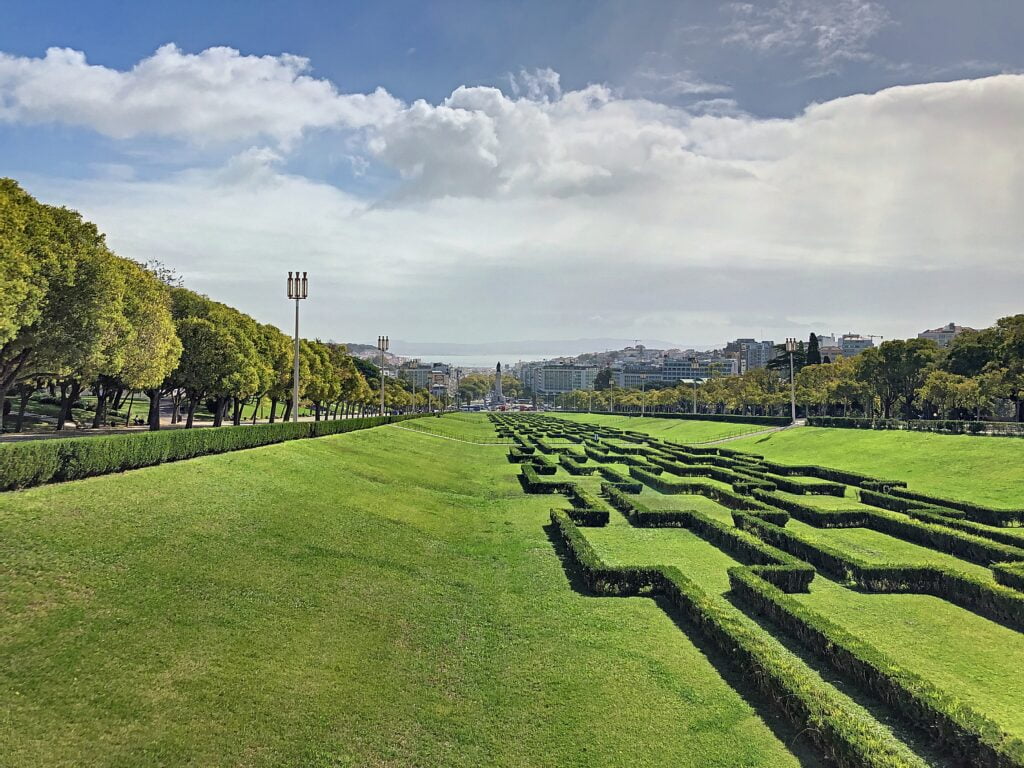
Many choose to descend towards Baixa via Avenida da Liberdade, also known as the “Champs Elysées of Lisbon”, to admire luxury brands. Instead, we take Rua Marquês de Fronteira, passing by the famous Amoreiras Wall of Fame – a renowned street art spot in Lisbon. It features murals paying tribute to celebrities, as well as more recent paintings.


Further away, there is another mural adorning the walls of the Centro Cultural de Cabo Verde.
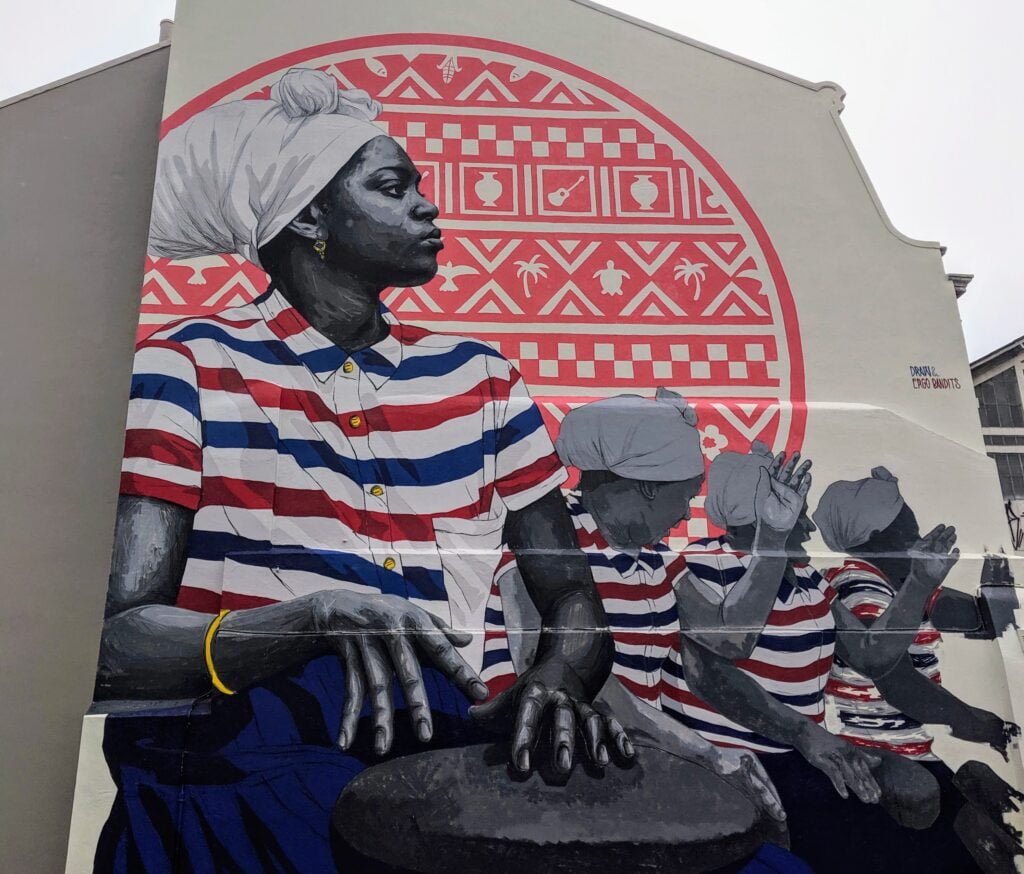
We continue towards Príncipe Real, one of Lisbon’s neighbourhoods that has undergone significant development in recent years. Here, several palaces have been transformed into upscale boutiques, and organic cafes and restaurants welcome both tourists and local hipsters…
A must-visit is Embaixada, a shopping gallery located in the iconic Palais Ribeiro da Cunha building. This 20th-century neo-Arabic palace showcases national stylists, designers, and artists, blending innovation and architectural heritage preservation that is definitely worth seeing. While prices may not be cheap, admission is free 😉
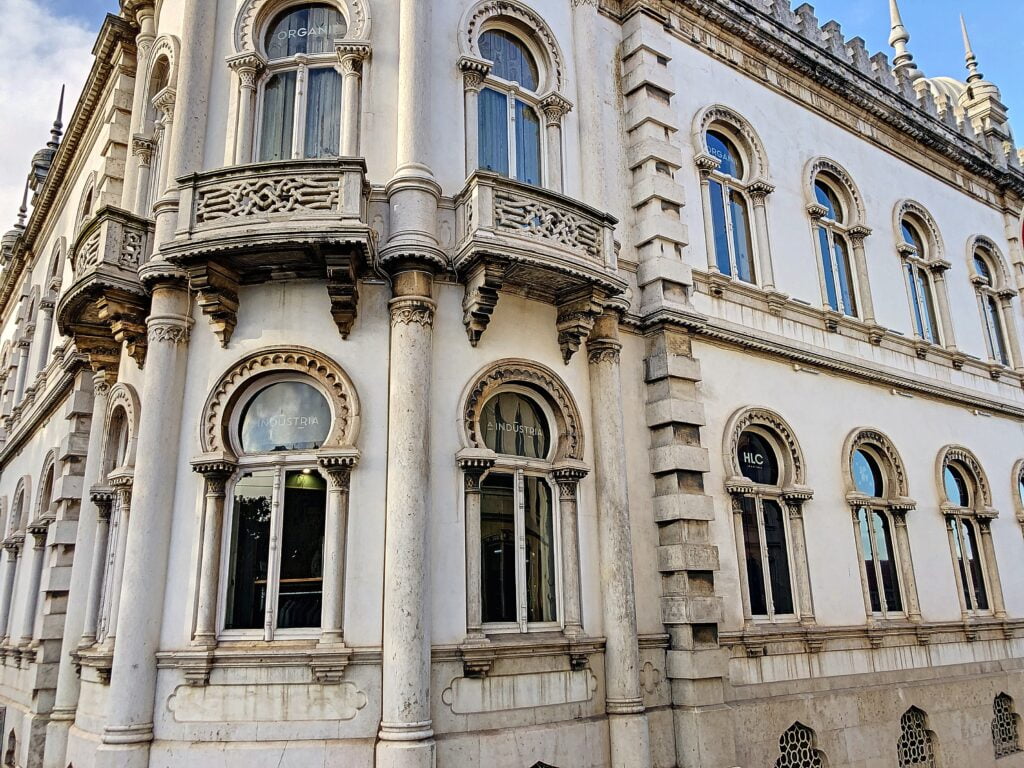
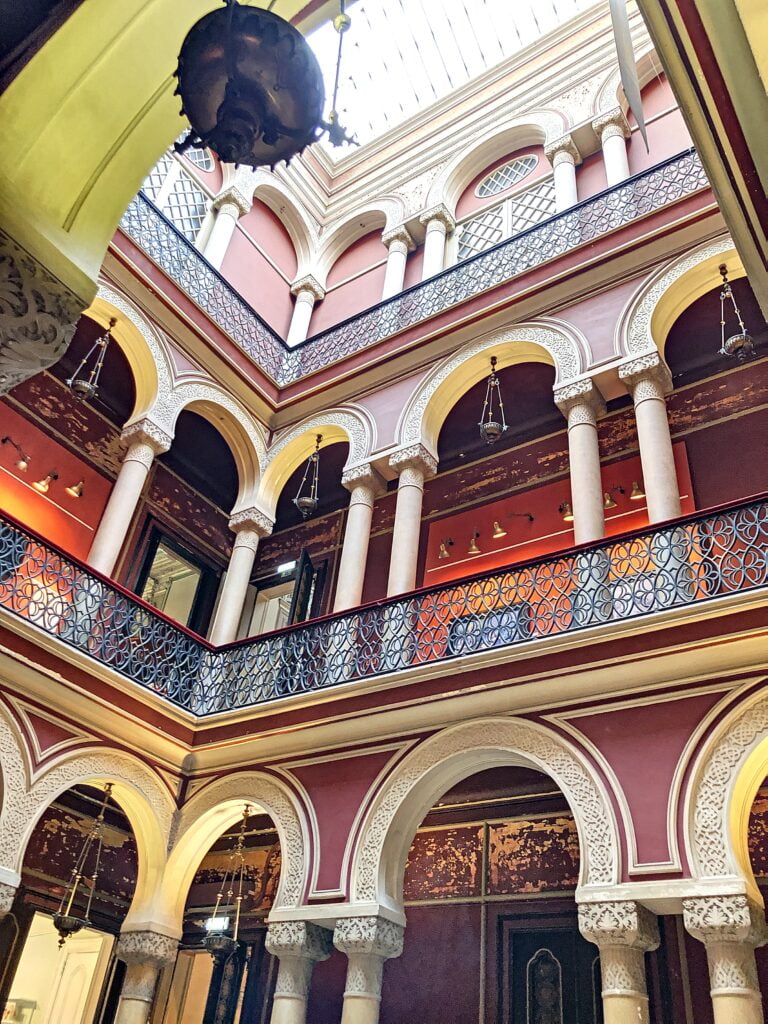
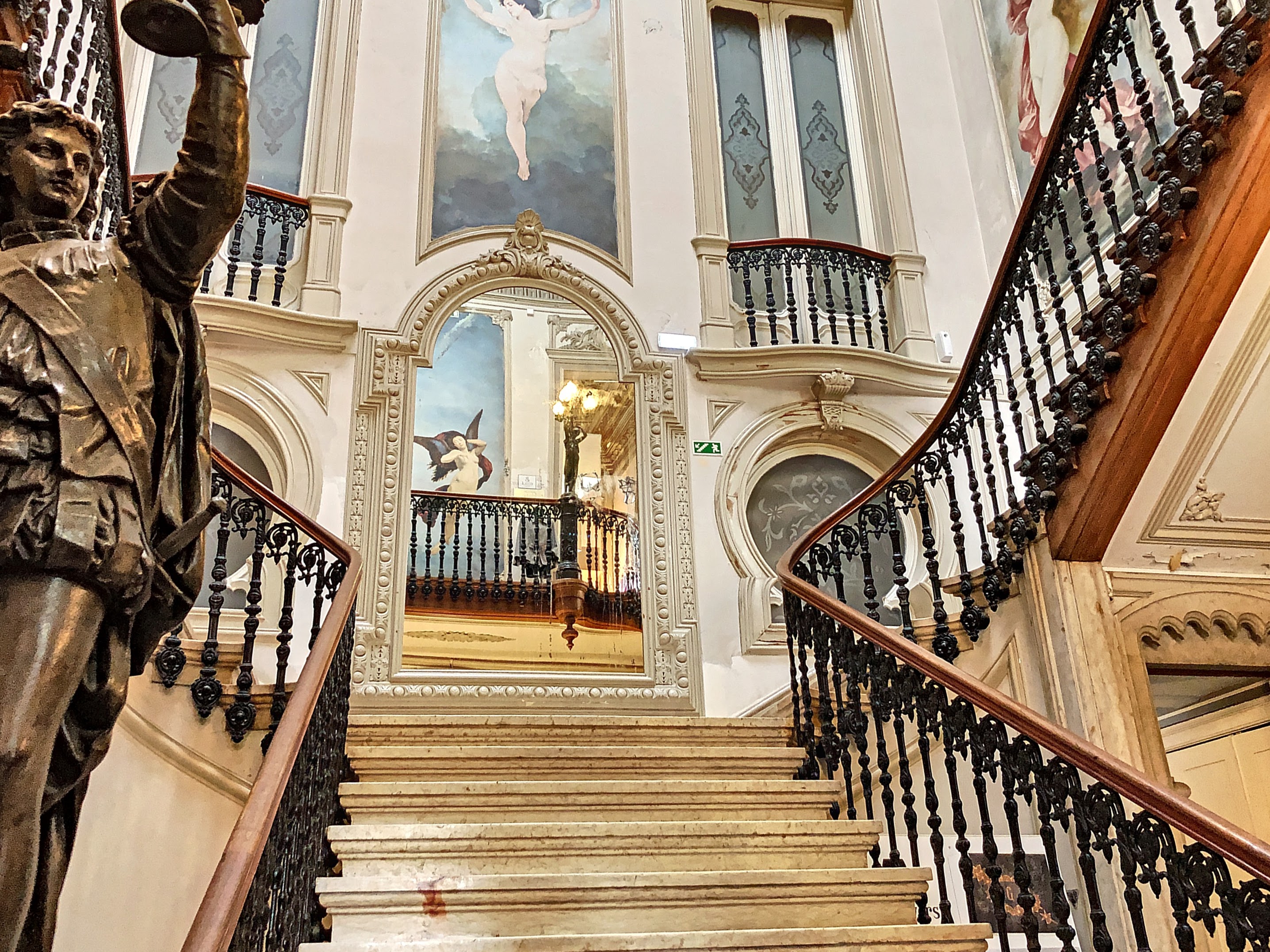
To end this third day of sightseeing, we head towards the Cais do Sodre district to join the Night Summit festivities on Pink Street.
Once reserved for prostitutes and rather dubious bars, the area underwent a significant renovation and rehabilitation project in 2011. As a result, Rua Nova do Carvalho, also known as Pink Street due to its pink-painted pavement, has become a vibrant hub of Lisbon’s nightlife.

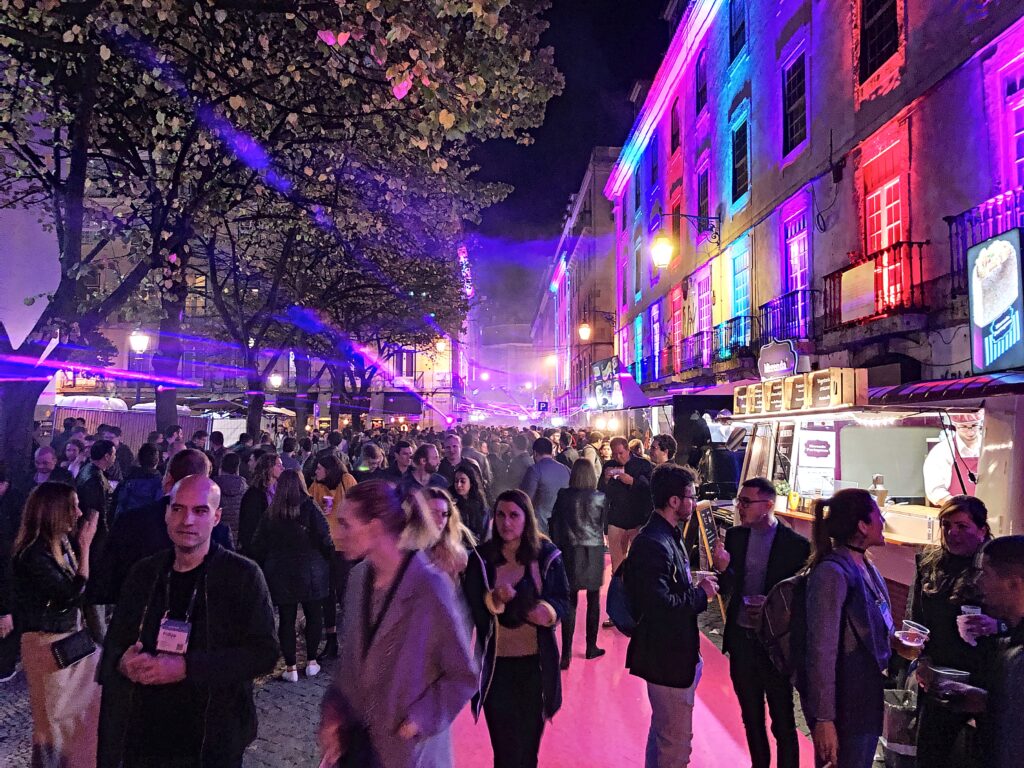
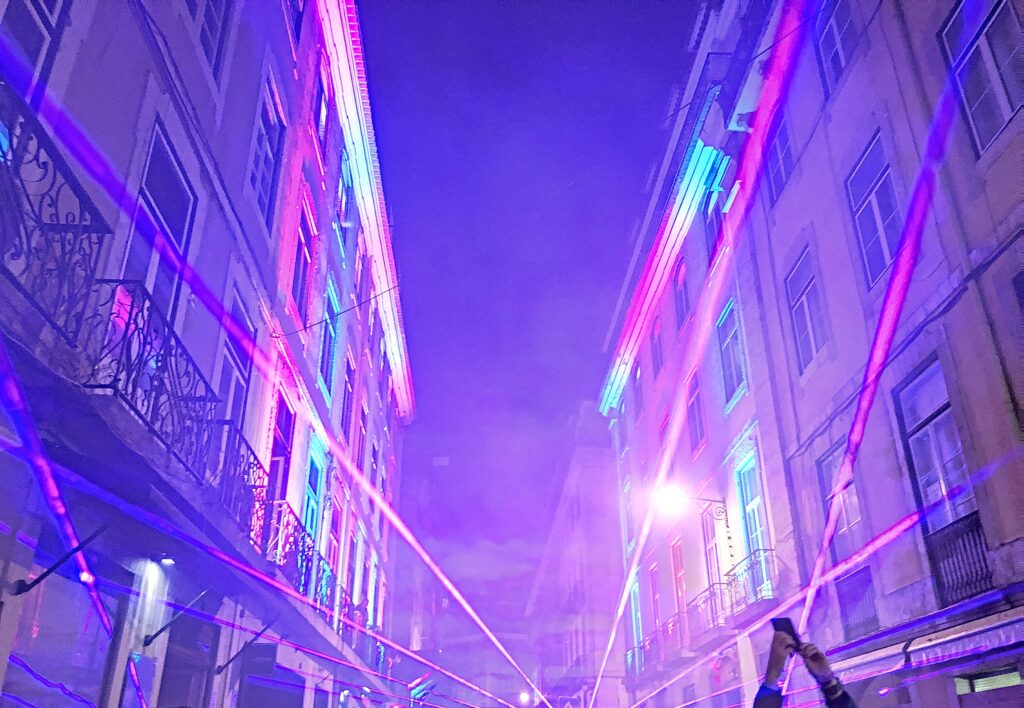
After inquiries, we found several establishments worth visiting for their unique ambiances. The Sol e Pesca stands out with its fishing nets decor, while Pensao Amor boasts a playful decoration inspired by a former brothel. However, we were quickly discouraged by the crowd at the Night Summit.
Quick stop at Praça do Comércio before returning to our beds 😴

Day 4 – Belém
On our fourth and final day of exploration, we head to Belém to trace the footsteps of great explorers. We begin by walking along the shores of the Tagus River, passing by the striking Belém Tower and the impressive Monument to the Discoveries.
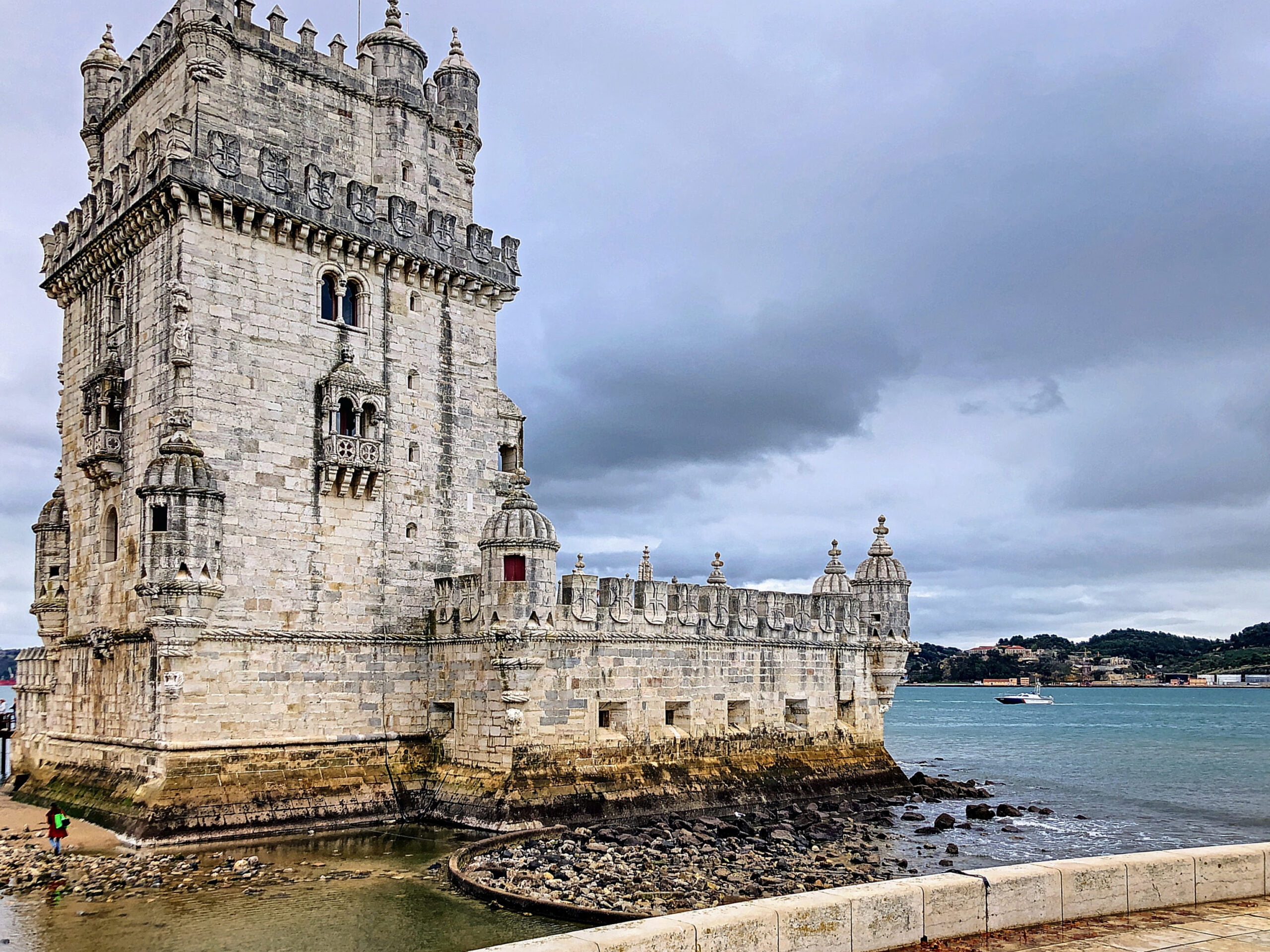
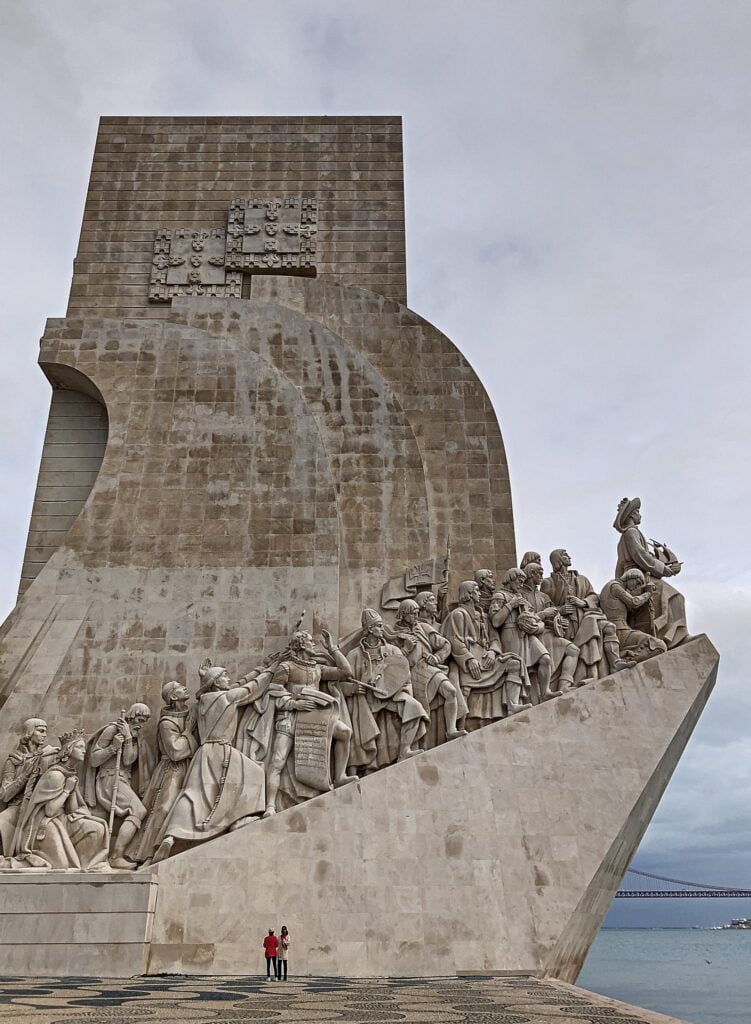
After a quick stroll through the tranquil paths of Jardim da Praça do Império, the Hieronymites Monastery offers a breathtaking sight that is sure to captivate.
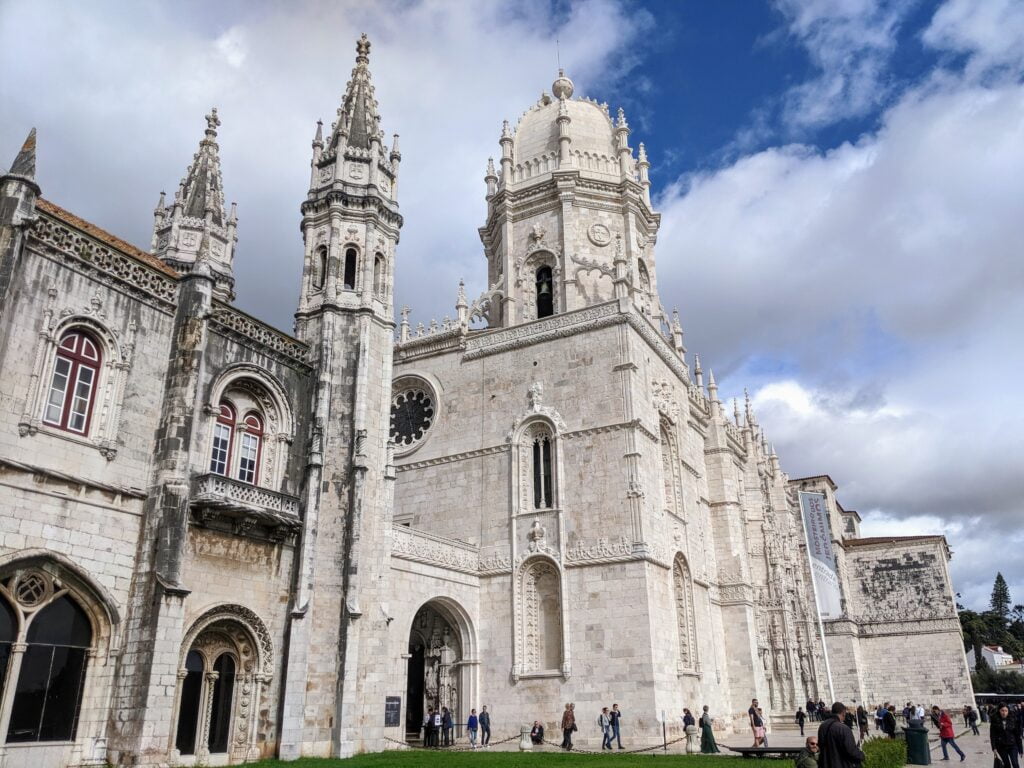
With its 55-meter long sides and intricately sculpted architecture, the monastery cloister is a true masterpiece of Manueline art, much like the interior of the Santa Maria church nave.
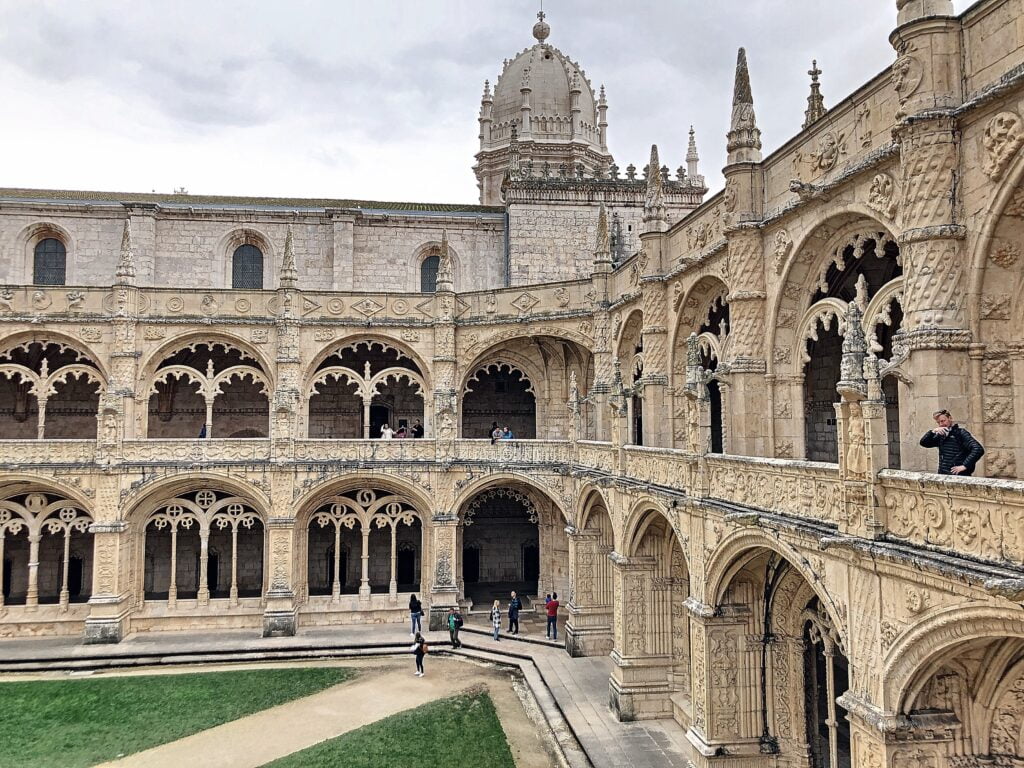
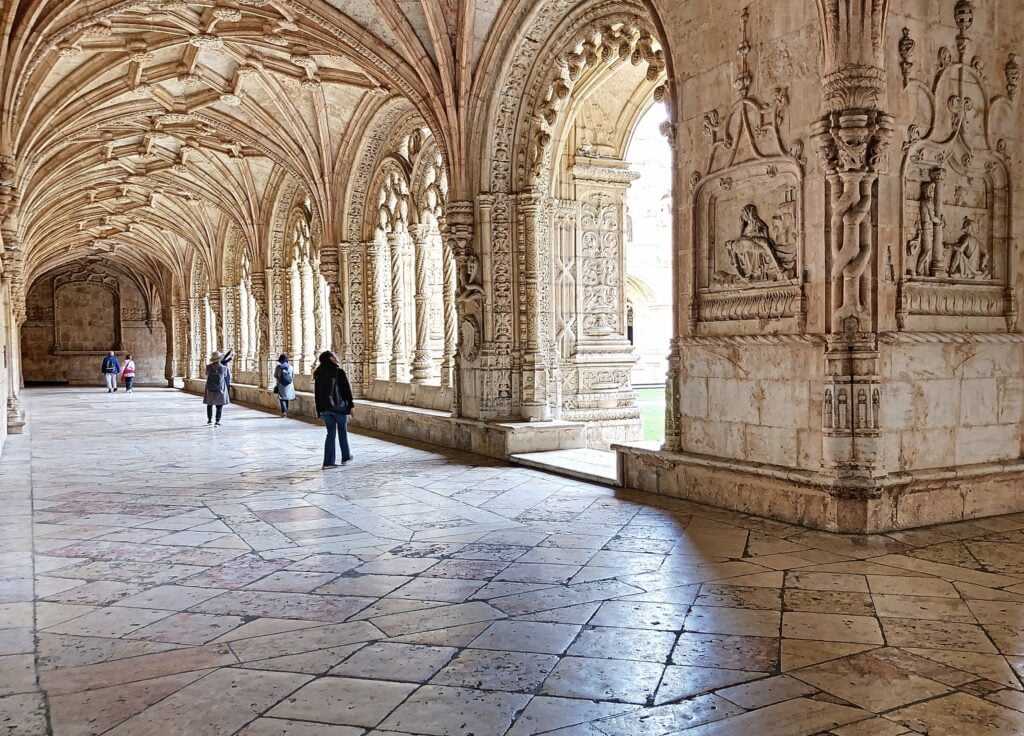
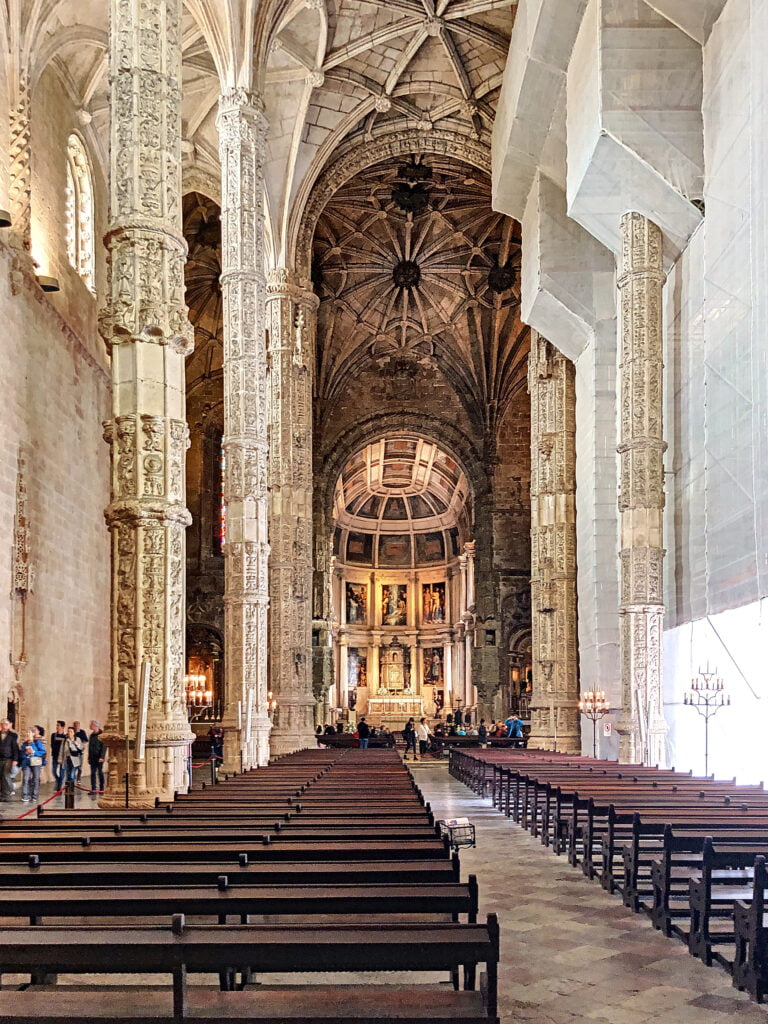
You can’t leave Belém without tasting the famous pastéis de Belém, created by the monks of the monastery in the 18th century. They are still made today using a secret recipe in the bakery established in 1837.

And so concludes our exploration of the “city of seven hills” 😍
➜ The complete route in Belém is detailed in the article: “One Day in Lisbon: Exploring Belém“
➜ All the details of our day visiting Alfama are covered in the article: “Lisbon: Explore Alfama, Mouraria, and Graça with this itinerary“


